

Cruise Control Symbol On Dashboard: Standard Symbol
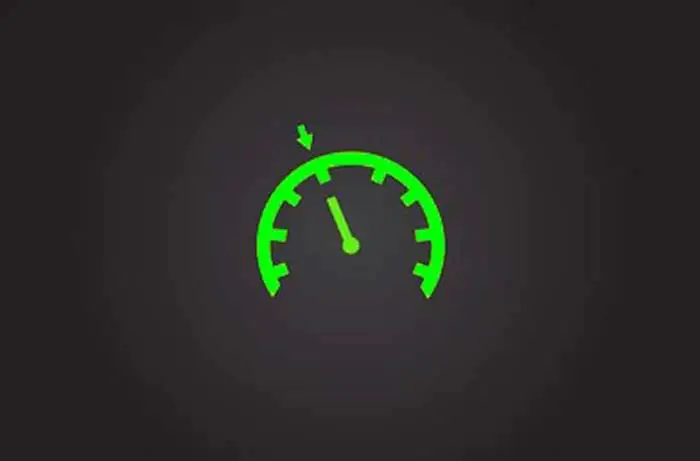
The cruise control system is an important part of a vehicle. It is a feature that helps the driver maintain a consistent speed without having to constantly adjust the accelerator pedal. This can be especially helpful on long road trips or in stop-and-go traffic. The cruise control system uses sensors to monitor the speed of the car and then adjusts the throttle accordingly.
If you have ever been driving and seen a small symbol that looks like a car with wavy lines behind it, you were probably wondering what it meant. This article will explain the meaning of the cruise control symbol on your dashboard. In this powerful guide, you are going to learn cruise control symbols and also adaptive cruise control symbols with pictures in two minutes.
Cruise Control Symbol On Dashboard

Cruise control is an electronic feature that maintains the car’s constant speed without holding the foot on the accelerator pedal. It evolved over the years, but the essence of cruise control is still the same to maintain a constant speed without holding your foot on the accelerator pedal.
It uses symbols to let you know the state of the cruise control. Every car manufacturer uses symbols with little variation, so it is better to visit the car owner’s manual for the specific symbol your car use.

Some cars, especially old cars use the text symbol “Cruise Main” to show the cruise control is turned ON. Once the car speed is SET, then the text symbol turns to “Cruise Control”. There are variations in Text symbols.
Related Post: What Is Cruise Control In A Car
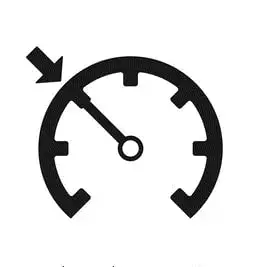
The new cars use the cruise control symbol instead of the text symbol. The new cruise control symbol replaces the word “Cruise Control” With a speedometer symbol and an arrow pointing to a set speed.
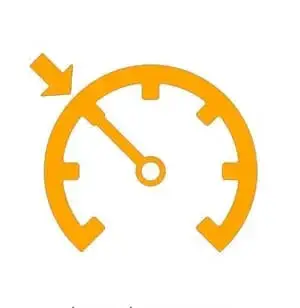
Cruise control uses two types of colors to show the state of the cruise control. The cruise control uses orange light when the cruise control stays on, but the speed has not been set yet.
Related Post: How Does Cruise Control Work: We Have The Best Answer
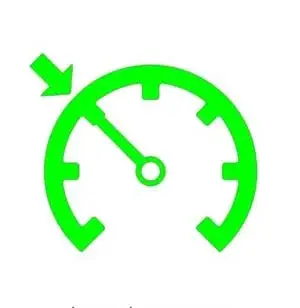
Once the cruise control speed is SET, the light turns green. So, a green light indicates that the cruise control has been set to the chosen speed.

Sometimes when the cruise control is turned ON and the cruise control speed is set, A SET indicator symbol appears on the instrument panel telling you that cruise control speed has been chosen.
Related Post: Does Cruise Control Save Gas

In some models, when you turn ON the cruise control, it gives a symbol to manually set the speed of the car. They are usually written MPH.

When a fault occurs in cruise control, an exclamation mark is added to the cruise control orange symbol.
There is a variation in cruise control signs showing fault in cruise control. But all variations inform the driver that the cruise control cannot be engaged.
Related Post: Adaptive Cruise Control System
About The Author
Related Posts
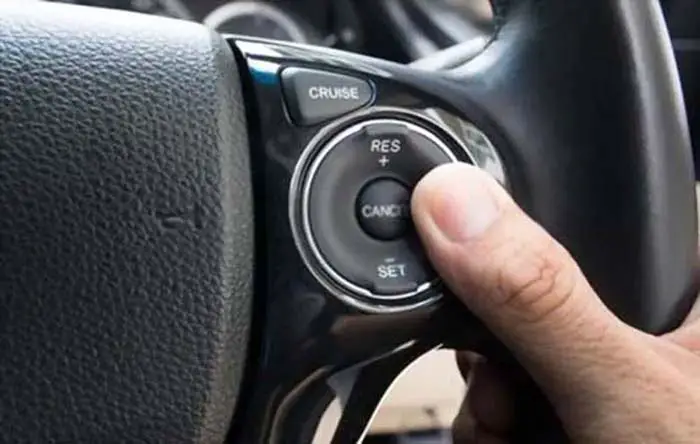
How To Turn OFF Cruise Control, When To Use It & When Not
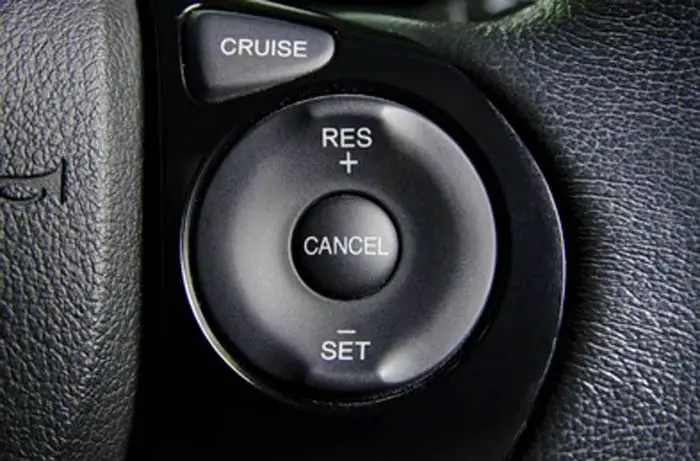
How Does Cruise Control Work: We Have The Best Answer
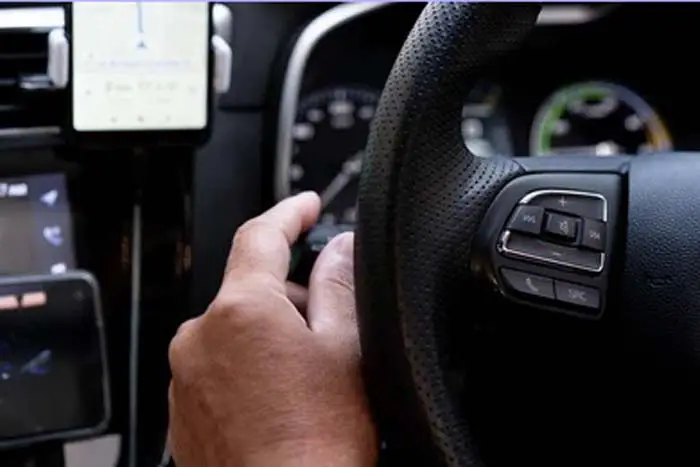
Advantages & Disadvantages Of Adaptive Cruise Control
Leave a comment cancel reply.
Your email address will not be published. Required fields are marked *
Save my name, email, and website in this browser for the next time I comment.

- PRO Courses Guides New Tech Help Pro Expert Videos About wikiHow Pro Upgrade Sign In
- EDIT Edit this Article
- EXPLORE Tech Help Pro About Us Random Article Quizzes Request a New Article Community Dashboard This Or That Game Popular Categories Arts and Entertainment Artwork Books Movies Computers and Electronics Computers Phone Skills Technology Hacks Health Men's Health Mental Health Women's Health Relationships Dating Love Relationship Issues Hobbies and Crafts Crafts Drawing Games Education & Communication Communication Skills Personal Development Studying Personal Care and Style Fashion Hair Care Personal Hygiene Youth Personal Care School Stuff Dating All Categories Arts and Entertainment Finance and Business Home and Garden Relationship Quizzes Cars & Other Vehicles Food and Entertaining Personal Care and Style Sports and Fitness Computers and Electronics Health Pets and Animals Travel Education & Communication Hobbies and Crafts Philosophy and Religion Work World Family Life Holidays and Traditions Relationships Youth
- Browse Articles
- Learn Something New
- Quizzes Hot
- This Or That Game
- Train Your Brain
- Explore More
- Support wikiHow
- About wikiHow
- Log in / Sign up
- Cars & Other Vehicles
- Driving Vehicles
- Efficient Driving
How to Use Cruise Control on a Car
Last Updated: February 20, 2024 Fact Checked
This article was co-authored by Simon Miyerov . Simon Miyerov is the President and Driving Instructor for Drive Rite Academy, a driving academy based out of New York City. Simon has over 8 years of driving instruction experience. His mission is to ensure the safety of everyday drivers and continue to make New York a safer and efficient driving environment. This article has been fact-checked, ensuring the accuracy of any cited facts and confirming the authority of its sources. This article has been viewed 487,006 times.
Many cars come with cruise control systems, a great feature that will automatically keep a car driving at a set speed. This gives your feet a rest, and helps you save gas and avoid speeding tickets. Familiarize yourself with your car's cruise control switches, located on or near the steering wheel. Make sure to use cruise control only in safe conditions, and to stay focused on the road. Once you know how to operate cruise control, you're ready for a comfortable, efficient drive!
Get Car Support Solve Any Problem
We’re sorry we don’t support the car you are looking for. Please enter its make, model, and year below so that we can add support for it.
Operating Cruise Control

- Check your car's operating manual if you are unable to find the cruise control switches.

- Many cars have additional buttons to increase or decrease speed (marked by a +/-) when using cruise control.

- For some car models, cruise control will not operate below a certain speed, such as 40 miles (64 km) per hour.

- To stop cruise control briefly (such as when a car in front of you brakes), just press the brake as you normally would.
- If you are driving a manual, you can also disengage cruise control by pressing the clutch.
- If you are completely done using cruise control, you can press the “OFF” or "ON/OFF" switch.
- If your car has a cruise control “CANCEL” switch, you can also press that to stop it.

- If your car has a +/- button for cruise control, press this when you want to raise or lower your car's speed.
Using Cruise Control Safely and Efficiently

- Using cruise control on busy streets can also be dangerous. Since you yourself are not in complete control of your car, you may be paying less attention. You might brake or react to other cars more slowly than normal, increasing the chance of an accident.

- Wet or snowy roads
- Hilly, steep, or mountainous areas
- Winding roads

Expert Q&A

You Might Also Like

- ↑ Simon Miyerov. Driving Instructor. Expert Interview. 4 December 2019.
- ↑ https://www.youtube.com/watch?v=jKtBSFoAYlg
- ↑ http://www.thecarexpert.co.uk/cruise-control/
About This Article

If you want to use cruise control on your car, make sure you're on the open road, such as a freeway or highway. Additionally, avoid using cruise control in rainy or snowy conditions, or if you're driving through a city, since you'll need to change speed and turn regularly. When you're ready to switch to cruise control, press the "Set" switch, which is usually found on the steering column or on the wheel, when your car reaches the desired speed. To stop cruise control, press on the brake or push the clutch if you're driving a manual car. To learn when to avoid using cruise control and how it can help you save on fuel, read on! Did this summary help you? Yes No
- Send fan mail to authors
Reader Success Stories
Joseph Adizero
Dec 17, 2020
Did this article help you?
Suraj Sinha
Jun 17, 2016
Ashish Vohra
Oct 17, 2017
Jul 26, 2017
Jun 15, 2023

Featured Articles

Trending Articles

Watch Articles

- Terms of Use
- Privacy Policy
- Do Not Sell or Share My Info
- Not Selling Info
Don’t miss out! Sign up for
wikiHow’s newsletter
Enter your email below to receive occasional updates in your inbox.
- < Back to email setting
Cruise Control: What It Is and How to Use It
How to use cruise control.
The location of the cruise control buttons can vary per car. For your car, check the manufacturer’s manual for the location and specific instructions. To set cruise control, press the ON/OFF button or switch. If you press this button again, it typically turns the system off. The Res + (resume / increase seed) button increases the cruising speed by 1 mph, while the Set – (set speed / reduce speed) button decreases it by 1 mph. To shut off the cruise control, you can press the Cancel button or simply press the brake pedal. [1]
What is cruise control?
Cruise control locks your car’s accelerator at a specific speed, allowing you to take your foot off the pedal and remain at a constant speed. Because it’s so convenient for commuters and drivers who use the highway frequently, cruise control is a feature that generally comes standard on most models of cars. [2]
What is adaptive cruise control?
Adaptive cruise control is very similar to conventional cruise control, only it automatically adjusts the speed of your vehicle depending on how fast the vehicle in front of you is going. It may also reduce your speed around tight curves and adjust to speed limit changes, depending on your car’s technology. [3]
How to set cruise control
Follow these steps when setting the cruise control:
- Evaluate weather conditions: Check for hazardous weather conditions and any oncoming obstacles before applying cruise control.
- Build your speed: The ideal speed for cruise control is between 55 and 70 mph.
- Turn cruise control on: The button is usually on or near your steering wheel.
- Set cruise control: Press another button on your steering wheel and remove your foot from the accelerator.
- Watch the road carefully: You will have a slower reaction time if your foot is off of the brake or accelerator pedal. [1]
How does cruise control work?
Cruise control adjusts the throttle position in your car to control your speed. It does this by a cable connected to an actuator, instead of just by pressing the pedal to adjust the speed. [4]
Cruise control safety tips
Follow these safety tips while using cruise control on the road:
- Use it only on highways: Roads with lower speeds often have traffic lights, turns and other cars that require frequent stops.
- Don’t use it in heavy traffic: If you hit traffic and use the brakes a lot, cruise control isn’t ideal.
- Don’t use it on wet streets: Wet roads are dangerous, and it’s important to keep control of your car and its speed in those conditions.
- Keep your distance from other cars: A set speed could cause you to get dangerously close to other vehicles. Not every car as the distance-monitoring system that adjusts your car’s speed based on what’s in front of you.
- Hover your foot over the brake: Always be prepared to break whenever necessary.
- Be aware of your surroundings: Look out for other cars on the road and stay in your lane. [5]
Cruise control when it’s raining
Avoid using cruise control when the roads are wet . You might not be able to stop as quickly as you’d like when using cruise control. This could lead to dangerous situations and even accidents. Wet roads can affect your car’s ability to maintain a constant speed. There’s even a possibility if you’re using cruise control while it’s raining that your vehicle could hydroplane . [6]
Frequently asked questions about cruise control
Does cruise control save gas.
Cruise control can help you save an average of 7% to 14% on gas. When you don’t use cruise control and constantly press the accelerator and brake pedals, more gas is usually used. Cruise control works best to save gas when driving on flat roads that are free of congestion. [7]
Is cruise control bad for your card?
In general, cruise control isn’t bad for your car. It can actually reduce heavy acceleration and deceleration. It doesn’t damage your car in any way, and the frequent use of it doesn’t affect your vehicle. [8]
Is cruise control safe?
Cruise control is convenient for long stretches of driving and it can keep you from speeding if you set your speed to the correct limit. However, if the road conditions are rainy or snowy, cruise control can be dangerous. To use cruise control safely, it’s best to know when you should and shouldn’t use it. [9] Using cruise control on the highway makes your driving more predictable to other drivers. Instead of constantly changing speeds, cars know how fast you’re driving and can follow safely behind you or pass.
When should cruise control not be used?
You shouldn’t use cruise control in the following conditions:
- When the roads are wet and slippery.
- During heavy traffic.
- On hills and winding roads. [9]
[1] “What is cruise control?” kia.com/dm/discover-kia/ask/what-is-cruise-control.html (accessed July 11, 2023).
[2] “How to Use Cruise Control: 7 Specific Things You Need to Know Well,” driving-tests.org/beginner-drivers/how-to-use-cruise-control (accessed July 11, 2023).
[3] “What Is Adaptive Cruise Control? Is It Worth Paying For?” Stefan Ogbac, motortrend.com/features/adaptive-cruise-control (accessed June 2, 2020).
[4] “How Cruise Control Systems Work,” Karim Nice auto.howstuffworks.com/cruise-control.htm (accessed Feb. 9, 2021).
[5] “6 Cruise Control Safety Tips You Should Never Ignore,” Marisol Pereira and Carrie Adkins, getjerry.com/advice/6-cruise-control-safety-tips-you-should-never-ignore-by-marisol-pereira (accessed April 27, 2022).
[6] “How Does the Cruise Control in Cars Work?” mapfreinsurance.com/blog/how-does-cruise-control-in-cars-work (accessed July 11, 2023).
[7] “Does cruise control save gas?” kia.com/dm/discover-kia/ask/does-cruise-control-save-gas.html (accessed July 11, 2023).
[8] “Everything You Need to Know about Cruise Control,” Dave Johnston, mycarmakesnoise.com/electronics/cruise-control-guide (accessed July 11, 2023).
[9] “Is Cruise Control Safe to Use?” kaufmanlawatlanta.com/is-cruise-control-safe-to-use (accessed July 11, 2023).
Disclaimer:
The information included here is designed for informational purposes only. It is not legal, tax, financial or any other sort of advice, nor is it a substitute for such advice. The information may not apply to your specific situation. We have tried to make sure the information is accurate, but it could be outdated or even inaccurate in parts. It is the reader’s responsibility to comply with any applicable local, state or federal regulations. Nationwide Mutual Insurance Company, its affiliates and their employees make no warranties about the information nor guarantee of results, and they assume no liability in connection with the information provided. Nationwide and the Nationwide N and Eagle are service marks of Nationwide Mutual Insurance Company. © 2024 Nationwide
Related articles
Average life of car batteries: tips to extend car battery life.
Car batteries are an essential part of an automobile. From getting your car started to charging your phone on the go, batteries provide the electricity your vehicle needs to keep...
7 Tips for Storing an RV
Discover everything you need to know about safely and securely storing your RV during the off-season from these tips.
What Is an Ignition Coil?
An ignition coil, as its name suggests, plays a vital role in igniting the engine. This small yet potent device delivers up to 60,000 volts of power to the spark...

What is Cruise Control and How Does it Function in a Car?

A Quick Overview
Driving on long stretches of highway can be tiring, especially when trying to maintain a constant speed. Cruise control alleviates this by allowing drivers to set and maintain a desired speed without continuous use of the accelerator pedal. Understanding how cruise control functions can help drivers make the most of this convenient feature.
What is Cruise Control?
Cruise control is an automotive feature that enables drivers to set a desired speed for their vehicle. Once activated, the cruise control system maintains the set speed without the need for constant pedal input. It helps drivers maintain a steady pace on long trips, providing convenience and reducing the likelihood of unintentional speed fluctuations.
How Does Cruise Control Function?
Cruise control systems may vary slightly among different vehicle models, but they generally function using the following components and controls:
1. Set Button
To activate cruise control, the driver typically presses a “Set” button or engages a switch on the steering wheel or dashboard. This action captures the current speed of the vehicle and sets it as the target speed for the cruise control system to maintain.
2. Speed Control
Once the cruise control system is activated, the driver can adjust the speed using speed control buttons. These buttons allow the driver to increase or decrease the set speed in small increments. By pressing the appropriate button, the driver can fine-tune the desired speed for their comfort and road conditions.
3. Resume Button
The “Resume” button, also known as the “Accel” button, allows the driver to restore the previously set speed after it has been canceled or temporarily interrupted. When the driver presses the “Resume” button, the cruise control system accelerates the vehicle to the previously set speed.
4. Cancel Button
The “Cancel” button, often marked with the symbol “CRUISE” or “OFF,” deactivates the cruise control system. Pressing this button disengages the system and allows the driver to regain full control over acceleration and braking. It is important to note that the brake pedal can also automatically deactivate cruise control when pressed.
Advantages of Cruise Control
Cruise control offers several advantages to drivers:
- Reduced Driver Fatigue: Cruise control allows drivers to maintain a steady speed without continuously pressing the accelerator pedal, reducing fatigue on long drives.
- Improved Fuel Efficiency: By maintaining a consistent speed, cruise control can help optimize fuel efficiency by reducing unnecessary acceleration and deceleration.
- Avoiding Speeding: Cruise control helps drivers adhere to speed limits by maintaining a set speed, preventing unintentional speeding due to variations in foot pressure on the accelerator pedal.
Limitations of Cruise Control
While cruise control provides convenience, there are limitations to consider:
- Traffic and Safety: Cruise control should be used only in appropriate situations. It is important to remain vigilant and be ready to take control of the vehicle when necessary, such as in heavy traffic or hazardous road conditions.
- Hilly Terrain: Cruise control may struggle to maintain a constant speed on hilly terrain, as it cannot anticipate changes in elevation. In such situations, the driver may need to manually intervene and adjust the speed accordingly.
👉 You may also like - A Deep Dive into the Adaptive Cruise Control System. What Is It?
What is cruise control?
Cruise control is a technology in cars that allows drivers to maintain a constant speed without keeping their foot on the accelerator. The feature is commonly used during long drives on highways or other open roads.
How does cruise control work?
When cruise control is activated, the driver sets a desired speed for the car to maintain. The car’s engine and transmission work together to maintain that speed without any input from the driver.
Is it safe to use cruise control while driving?
Yes, cruise control is generally safe to use while driving. However, drivers should remain attentive and ready to take control of the car at any moment. It’s also important to note that cruise control should not be used in hazardous weather or road conditions.
What are the benefits of using cruise control?
Using cruise control can improve fuel efficiency by helping drivers maintain a consistent speed and reduce unnecessary acceleration. It can also reduce driver fatigue during long drives by allowing them to rest their feet.
Can all cars have cruise control installed?
Not all cars come with cruise control as a standard feature, but many newer cars do have this option available. Additionally, aftermarket cruise control systems can be installed on most cars.
Can cruise control be dangerous?
Cruise control can become dangerous if the driver becomes too reliant on it and fails to remain attentive. Additionally, using cruise control in hazardous conditions, such as heavy traffic or inclement weather, can be dangerous.
Does cruise control work on manual transmission cars?
Cruise control can be installed on manual transmission cars, but it requires a more advanced system than the one used for automatic transmissions. Manual transmission cruise control systems are typically more expensive and less common.
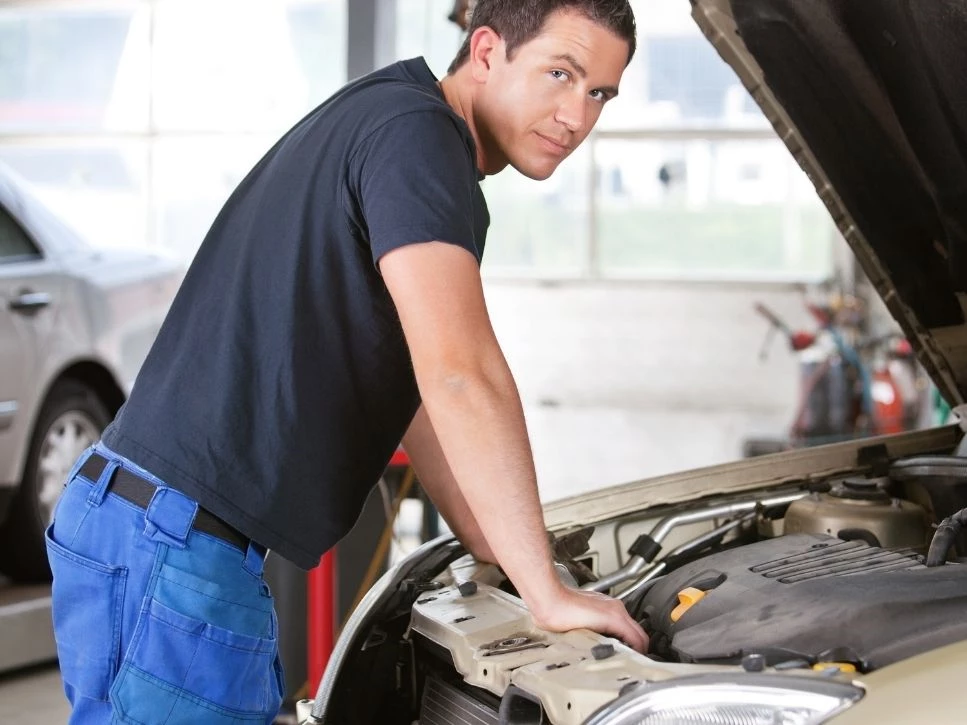
Is Bypassing the Crank Position Sensor Possible? Here's How
A guide to wiring 1, 2, 3, 4 wire oxygen sensors. detailed diagrams.
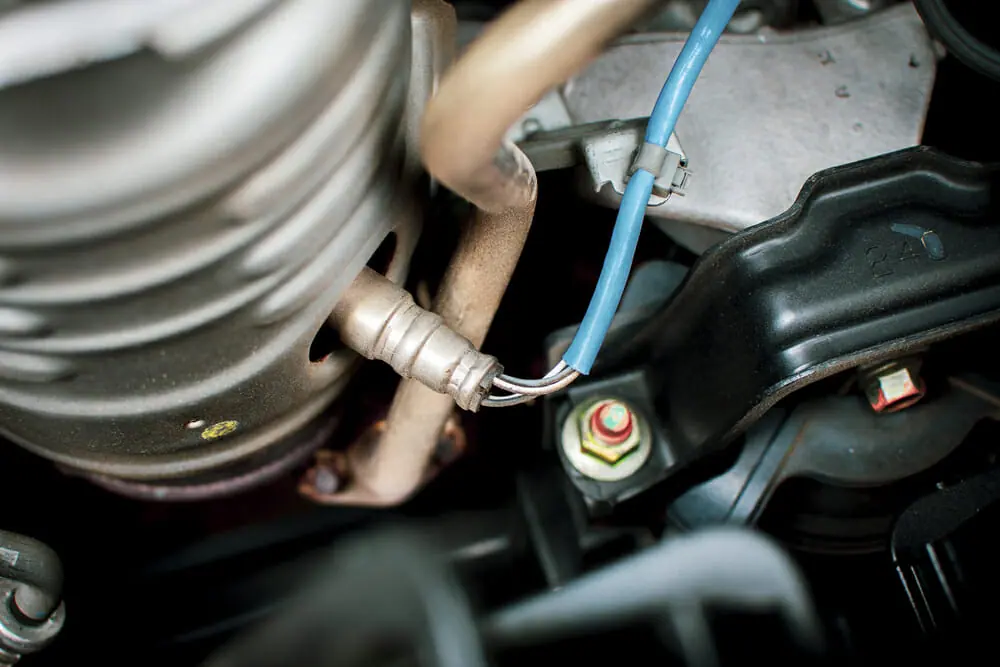
Mastering ASE Testing - The Ultimate Guide for Success

Keeping Current - Charging System Diagnosis and Repair
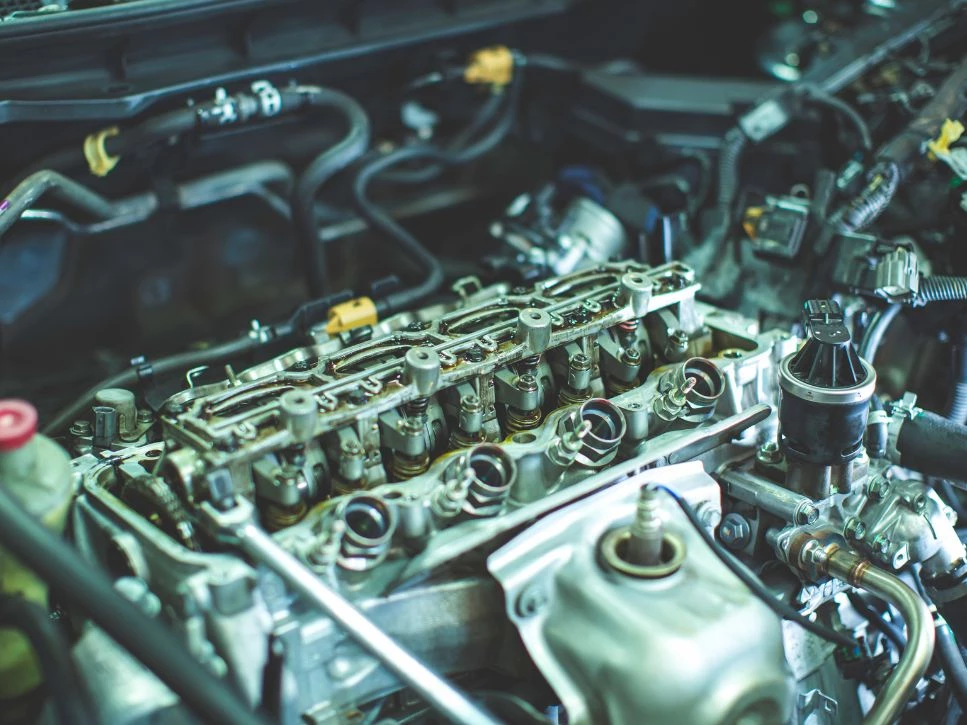
The complete ASE practice test with answers and explanations
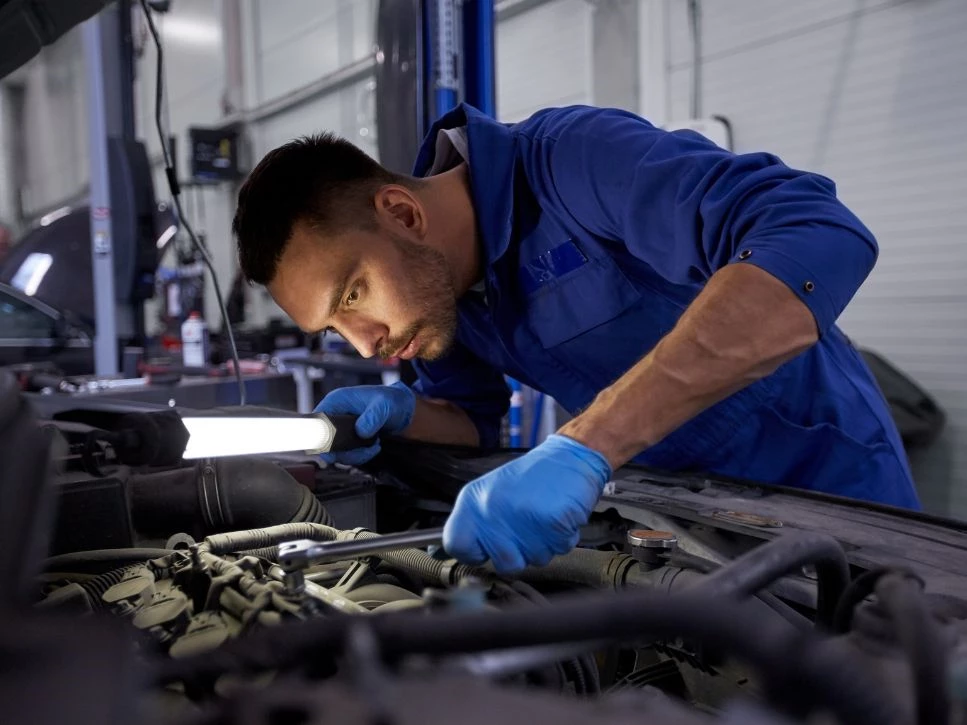
Enhancing the Ride - Accessories Diagnosis and Repair
Cruise Control In Cars Explained (And How To Safely Use It)

Have you ever wished you could set your car's speed and just sit back and relax while driving on a long stretch of highway? If that's the case, then cruise control is just the ticket you've been searching for—and the good news is, it's a standard feature in most cars these days!
Cruise control is a handy feature for drivers that allows you to maintain a constant speed without having to keep your foot on the gas pedal. In this post, we'll explore how cruise control works, its benefits, and how to use it safely to make your driving experience more comfortable.
Understanding Cruise Control
Cruise control, also known as speed control, is an electronic system that allows you to maintain a specific speed without manually controlling the accelerator pedal. The system uses sensors and electronic components to control the throttle and keep your car moving at a desired speed. First introduced in the late 1950s, cruise control has since become a standard feature in most modern vehicles you see on the road today.
How Does It Work?
At its core, cruise control involves a series of sensors that monitor the vehicle's speed and a control unit that regulates the throttle. When the driver sets the cruise control to a specific speed, the system adjusts the throttle to maintain that speed. If the car begins to slow down because of an incline (e.g. going up a hill), the system will open the throttle to accelerate. Conversely, if the car starts to speed up due to a declin (e.g. going downhill), the system will close the throttle to decelerate.
Modern cruise control systems also come with additional features like adaptive cruise control (ACC), which uses radar or cameras to detect vehicles ahead and automatically adjusts the speed to maintain a safe following distance (more on this BELOW).
The History of Cruise Control
The invention of cruise control can be traced back to the late 1940s and early 1950s, when engineer Ralph Teetor developed the first-speed control system. This innovative feature was designed to help drivers maintain a steady speed, reduce fatigue while driving, and improve fuel efficiency. Over the years, cruise control technology has undergone significant advancements, leading to the development of sophisticated systems like adaptive cruise control.
Types of Cruise Control Systems
Today, drivers can choose from a range of cruise control systems, each with its own unique features and functionalities.
Conventional Cruise Control
Conventional cruise control is like your old reliable friend. It's pretty basic and doesn't have any fancy bells and whistles. You just set the speed you want, and it'll keep your car cruising along at that speed, no problem. It's perfect for those long drives on open highways, but it doesn’t automatically react to other cars on the road.
So, if the car in front of you slows down, you'll need to step in and adjust your speed manually. This trusty system comes standard on most cars and is great for saving some fuel on those long road trips .
Adaptive Cruise Control (ACC)
Now, if conventional cruise control is your old reliable friend, then Adaptive Cruise Control (ACC) is like that friend's tech-savvy younger cousin. ACC isn't just maintaining your set speed, it's also keeping an eye on the car in front of you. If that car slows down, ACC slows your car down to keep a safe distance .
It's like having an extra set of eyes on the road, making highway driving a breeze. Plus, some ACC systems can even handle stop-and-go traffic, bringing your car to a full stop and then picking up speed again when traffic gets moving.
Predictive Cruise Control
Predictive Cruise Control is like the fortune teller of cruise control systems. It uses GPS and map data to see into the future and predict what's coming up on the road, like hills or curves, and adjusts your speed accordingly. This means you get a smoother ride and better fuel efficiency, but it all depends on the quality of the GPS and map data. If that's a bit out of date, your fortune-telling cruise control might not be so accurate. It's usually found in more high-end vehicles where top-notch fuel efficiency is a focus for the engineers.
Cooperative Adaptive Cruise Control (CACC)
And then we have Cooperative Adaptive Cruise Control, or CACC. This is like the team player of cruise control systems. It allows cars to talk to each other, coordinating their speeds to maintain a safe distance. It's like having a well-coordinated team of cars all working together to make the traffic flow smoother and reduce congestion. Picture it like a synchronized dance on the highway, where every car knows its place and keeps the right distance. This tech is still pretty new, but it's got a lot of potential. Imagine a future where traffic jams could be a thing of the past.
Remember, these systems are here to make your drive smoother and safer, but they're not a replacement for your attention. No matter how fancy your cruise control is, these systems can be greatly influenced by external conditions like weather and traffic, and they should always be used as aids, not replacements, for attentive driving.
Common Cruise Control Symbols and Indicators
Understanding the various symbols and indicators associated with cruise control is important for safe and effective usage. These symbols typically appear on the dashboard (or on the side of the steering wheel) and may include a speedometer icon, "SET," "RES" (resume), and "CANCEL". Be sure to consult your vehicle's owner's manual for specific details and explanations of these symbols.
Benefits of Using Cruise Control
Cruise control offers several benefits to drivers, especially during long road trips or highway driving.
Fuel Efficiency
One of the main advantages of using cruise control is improved fuel efficiency. By maintaining a constant speed, cruise control helps reduce fuel consumption, leading to better gas mileage. Rapid acceleration and deceleration, on the other hand, can lead to increased fuel consumption.
Comfort and Convenience
Cruise control allows drivers to take their foot off the accelerator pedal, reducing fatigue and improving comfort during long drives. It also helps drivers avoid unintentionally exceeding the speed limit by setting a maximum speed.
When used correctly, cruise control can contribute to safer driving. By maintaining a steady speed, it reduces the likelihood of erratic driving behavior and potential accidents. However, it is important to note that cruise control shouldn't be used in certain conditions, such as heavy traffic or slippery roads .
Troubleshooting Common Cruise Control Issues
Occasionally, you may encounter issues with your cruise control systems. Common problems include cruise control not engaging or disengaging unexpectedly. Possible causes may include a faulty brake light switch, malfunctioning sensors, or issues with the control module. If you experience any problems with your cruise control, it's best to have a qualified technician diagnose and repair the issue for you.
Cruise Control and Road Etiquette
Practicing proper road etiquette while using cruise control is essential for a safe and pleasant driving experience. Here are some tips on how to use cruise control courteously:
- Avoid using cruise control in heavy or congested traffic, as it may hinder your ability to react quickly to changing conditions.
- Be mindful of other drivers when setting your speed. Avoid setting a speed that's significantly slower or faster than the flow of traffic.
- If you are in the passing lane and using cruise control, be sure to adjust your speed or temporarily disengage the system to allow faster-moving vehicles to pass.
- Always signal your intentions, such as lane changes or exiting the highway, even when using cruise control.
The Future of Cruise Control Technology
Cruise control technology plays a vital role in the development of autonomous vehicles, or self-driving cars . In autonomous vehicles, cruise control systems work together with other advanced driver assistance systems (ADAS) to enable the vehicle to operate without direct driver input. These systems include lane-keeping assist, automatic emergency braking, and collision avoidance systems.
As autonomous vehicles become more sophisticated, cruise control technology is evolving to support higher levels of automation. For example, some autonomous vehicles are equipped with advanced cruise control systems that can navigate complex traffic scenarios, merge onto highways, and even change lanes autonomously.
While fully autonomous vehicles are still in the developmental stages, the integration of cruise control technology is a big step toward creating safer and more efficient transportation systems.
As automotive tech continues to advance, cruise control systems are becoming more intelligent and capable. Here are some potential developments we can expect to see in the future of cruise control technology:
- Integration of artificial intelligence (AI) to improve decision-making and responsiveness in adaptive cruise control systems.
- Enhanced connectivity and vehicle-to-vehicle (V2V) communication, enabling cars to share information about traffic conditions and coordinate their speeds for smoother traffic flow.
- Greater customization and personalization options, allowing drivers to set preferences for cruise control behavior, such as following distance and speed adjustments.
Overall, the future of cruise control technology holds promise for creating a more seamless and enjoyable driving experience, with a focus on safety, comfort, and sustainability.
Debunking Myths About Cruise Control
Let's address and debunk some common misconceptions about cruise control:
Myth : Cruise control can be used as a substitute for driver attention.
Fact : Cruise control is a driver assistance feature, not a replacement for attentive driving. Drivers should always remain alert and ready to take control when necessary.
Myth : Cruise control increases the risk of accidents.
Fact : When used appropriately, cruise control can contribute to safer driving by maintaining a steady speed and reducing erratic driving behavior.
Cruise control is a valuable feature that can enhance your driving experience by providing comfort, convenience, and fuel efficiency. Remember to use it safely and appropriately based on driving conditions, and always stay attentive while on the road.
If you found this post informative and want to learn more about car features, driving tips, and automotive technology, be sure to subscribe to our newsletter for regular updates. We're here to help you stay informed and enhance your driving experience.
Frequently Asked Questions About Cruise Control
To further enhance your understanding of cruise control, here are answers to some common questions:
Q : Can cruise control be used in all weather conditions?
A : It isn't advisable to use cruise control in adverse weather conditions, such as heavy rain, snow, or icy roads, as it may reduce your ability to respond quickly to changing road conditions.
Q : Can I use cruise control in urban areas with frequent stop-and-go traffic?
A : Cruise control is best suited for open roads and highways with consistent traffic flow. It isn't recommended for use in urban areas with frequent stops or heavy traffic.
Q : Does cruise control work at any speed?
A : Cruise control typically has a minimum speed threshold, below which it can't be engaged. This threshold varies by vehicle, so check your owner's manual for specific information.
About the Author: This article was crafted by the LOOP Marketing Team. Comprising of seasoned professionals with expertise in the insurance industry, our team is dedicated to providing readers with accurate, up-to-date, and valuable information. At LOOP, we're passionate about helping families navigate the world of car insurance, ensuring they get the best coverage at the most affordable rates. Learn more about our mission and values here.
For more insights on auto insurance and other related topics, visit our blog .
Quick Navigation
Check out how much you could save today.
Browse related articles

The Simplest Guide To Car Battery Types

Car Gear Every Driver Needs: A Car Door Step

What To Do When Your Car Gets Stolen
Life has many roads. your weekly navigator is just a click away..
Honda Canada announces 2025 Civic Sedan pricing, including hybrids
Survey says many ev owners want gasoline cars next time, 2025 subaru forester: boxy, but good (very good, actually), suv review: 2024 dodge hornet r/t, 17,000 dodges, rams recalled in canada over stability control, what is cruise control a comprehensive guide.
When the system is set, cruise control will maintain a steady speed for your vehicle
You can save this article by registering for free here . Or sign-in if you have an account.
Article content
Your vehicle’s cruise control system unlocks numerous benefits at the touch of a button — but according to web search data, drivers still have plenty of questions about what it is, what it does, and how it works.
What is Cruise Control? A Comprehensive Guide Back to video
Below, we’ll answer some of the most popular Internet search questions about cruise control, so you can make the best use of this important system.
What is Cruise Control?
With cruise control, your vehicle will maintain a steady speed when the system is set.
What is adaptive cruise control?
With adaptive cruise control, the vehicle will also automatically slow down and speed up to maintain a safe position in traffic.
How does cruise control work?
Cruise control work with a manual transmission just the same way it does with an automatic. Drivers set their cruising speed with a button press, and the system works the throttle automatically to maintain the desired cruising speed as evenly as possible. In some vehicles with a manual transmission, pressing the clutch pedal to shift gears turns the cruise control off, requiring an additional button press to reengage it after a gear change.
In other cars with a manual transmission, pressing the clutch pedal simply pauses the cruise control system a moment, allowing drivers to complete their gearshift. When they’ve released the clutch, the cruise control picks up where it left off — no additional button press required.
Is cruise control more fuel efficient?
Yes. Increasing your vehicle’s speed uses fuel. While cruising, even a highly competent driver who isn’t using cruise control will tend to slow down and speed up in a repeated cycle, possibly several times per minute. Though fluctuations in speed may be slight, they do cause your engine to use more fuel than required. Point is, the more time you spend at a steady speed, the less fuel your engine needs.
For most drivers, using cruise control on the highway at 80 km/h can reduce fuel consumption by about 20 per cent. For drivers who find difficulty in maintaining a steady speed and frequently experience big fluctuations, using cruise control can cut fuel use by over 40 per cent.
Depending on what you drive and how fast you drive it, using cruise control could save you between $4 and $20 per hour — based on information from Natural Resources Canada that shows most drivers who don’t use cruise control on the highway will tend to experience a 10 km/h speed fluctuation about three times per minute.
Drivers who have the most difficulty managing their cruising speed could be using 60 per cent more fuel than they need to.
Is cruise control bad for your transmission?
No. Your vehicle’s engine, transmission and other components are designed to work hand-in-hand with its cruise control system and are extensively tested and integrated with one another for trouble-free performance.
Using cruise control also reduces wear and tear on both your engine and transmission by running things more smoothly and steadily, and reducing workload on both components.
Can you add cruise control to a car?
Yes. Depending on the year, make and model, cruise control may be available for add-on or retrofit. Professional installation is recommended, and you’ll want to talk to a professional about the specific availability of parts and integration for your vehicle.
In many cases with modern cars, it’s generally easier and more cost effective to just opt for a unit equipped with cruise control from the factory. Cruise control is widely available as standard equipment on most modern vehicles.
Can cruise control get stuck?
Yes , but it’s extremely rare. Older cable-based cruise control systems seem more prone to this rare problem, in which the cable can slip or bind, making the throttle stick into position. More modern vehicles with electronic throttle and monitoring systems make this problem even less likely.
If the cruise control on your car fails to disengage when you want to slow down, slip the vehicle into neutral to disconnect drive power from the wheels, pull over, and address the situation.
However, chances are, you’ll never experience this problem.
When should cruise control be used?
Any time you’re trying to drive at a constant speed. Whether around town at 60 km/h, in a residential area at 40 km/h, or out on the highway at 105 km/h, switching the cruise control on makes for a smoother and more fuel efficient drive that’s easier on your engine and transmission. it can also help you do your part to maintain the steady and efficient flow of traffic.
Most cruise control systems can be engaged at speeds above 30 km/h.
When should cruise control not be used?
Any time you can’t safely drive at a steady speed. If the road surface is snowy, icy, slushy or very wet, you’ll want to think twice about switching your cruise control on.
In older cars, having your cruise control engaged on a wet or icy road could allow the vehicle to accelerate or experience wheelspin when driven wheels encounter a low-traction surface. Here, the cruise control system maintains throttle pressure, even in situations where it should be released instead. This could lead to a loss of control.
In more modern vehicles, electronic monitoring is used to automatically disengage cruise control when one of the following happens:
- one or more wheels slip
- one or more wheels leave the surface of the road after a major bump or dip
- the wipers are set to the maximum speed setting in heavy rain
Use your judgement. Safely navigating certain slippery or dangerous driving conditions requires careful manual control of your vehicle’s throttle, and in these situations, you’re best to leave the cruise control off.
What causes cruise control to kick off?
If the cruise control in your vehicle suddenly kicks off, a few things may be to blame.
Sometimes, cruise control disengages automatically when the vehicle’s automatic wipers detect heavy rainfall, or when a wheel spins or (briefly) leaves the surface of the road after a big bump or dip. In other situations, there may be a problem with one or more sensors or switches, including the brake pedal switch, throttle position sensor, or one or more wheel speed sensors.
Your modern cruise control system relies on various sensors and switches to do its job properly. As a failsafe, any problem with these sensors can cause the cruise control system to go offline. If you notice this happening regularly, have your vehicle diagnosed by a professional.
Will the cruise control work with an ABS light on?
Probably not. Your car’s Antilock Braking System works hand-in-hand with your cruise control system, and any fault with the ABS system will typically take your cruise control offline until it’s fixed.
An ABS warning light in your instrument cluster can indicate one of several major problems or malfunctions, so be sure to have a professional investigate as quickly as possible.
Will cruise control apply the brakes?
No, but adaptive cruise control will. Standard cruise control (simply called cruise control) holds your vehicle’s speed as constant as possible once set. More advanced adaptive cruise control systems use camera or radar-based sensing to determine the traffic situation in front of your vehicle, and can automatically apply the brakes to maintain a pre-set following distance.
With cruise control, drivers need to brake to slow down as they close in on a slower vehicle in traffic. With adaptive cruise control, the system makes these braking inputs automatically, and the vehicle speeds back up to its pre-set cruising speed once traffic clears.
Before you buy, be sure to determine which type of cruise control system is fitted to the car you’re considering.
What is Super Cruise?
Super Cruise is a next-level driver assistance feature available on certain GM vehicles.
With Super Cruise, the vehicle uses special GPS hardware and sensors to accurately compare its position to a 3D map of pre-qualified highways .
On these pre-qualified highways, Super Cruise allows drivers to go hands-free for extended periods as the vehicle automatically maintains its cruising speed, adjusts that speed for changing traffic conditions, and even precisely follows the curves in the road. It can even make hands-free lane changes.
Super Cruise is not an autonomous system, and in order for it to work, drivers need to keep their eyes on the road — there’s even a camera that monitors the position of the driver’s eyes to make sure they’re focused on the road ahead.
Sign up for our newsletter Blind-Spot Monitor and follow our social channels on Instagram , Facebook and X to stay up to date on the latest automotive news, reviews, car culture, and vehicle shopping advice.
- Commercial trucks are going electric, but it's going to be a long road
- Evolutionary: The Mercedes-Benz G-Wagen has never strayed far from its roots
- How to jump-start a car—a step-by-step guide
- Testing Mitsubishi’s AWD systems and Snow mode on ice
- 12 things to know about the 2025 Ram 1500 Ramcharger REx
Justin Pritchard
Justin Pritchard is an experienced motoring expert whose work is read and watched by Canadians across the country on a weekly basis. Starting his career at Auto123.com back in 2005 (while finishing his final year of studies at Laurentian University in Sudbury, Ontario), Justin quickly applied his passion for writing, presenting, and photography, working under some of the most recognized editors in the Canadian motoring scene.
Justin has written one of the largest collections of used car buyer guides on the internet, and his TV program, AutoPilot, has aired over 600 episodes across 16 seasons. Presently, AutoPilot is the only English-language motoring program on Canadian cable TV, though he's lent his informative style and easy-to-identify voice to video features for Youtube, Driving.ca, Autotrader.ca, Motoring TV, and elsewhere. With 4 years as co-chair of the Canadian Car of the Year Awards (CCOTY) program, a passion for vehicle testing shines though in all of his work.
A passion for photography from a young age makes Justin as comfortable behind the camera as in front of it, and capturing motoring memories from the scenery of beautiful Northern Ontario is a priority in much of his work. The particularly harsh winter climate in this part of Canada makes Justin a particular expert on winter driving, winter tires, and extreme-weather safety.
Major awards won by the author
Contact info.
Youtube: @JustinPritchard
Postmedia is committed to maintaining a lively but civil forum for discussion. Please keep comments relevant and respectful. Comments may take up to an hour to appear on the site. You will receive an email if there is a reply to your comment, an update to a thread you follow or if a user you follow comments. Visit our Community Guidelines for more information.
Affordable EVs
Small trucks
Popular Crossover SUVs
Practical 3-row SUVs
Minivans for the whole family
Compact Cars
Luxury SUVs
Affordable AWD SUVs
All things automotive: breaking news, reviews and more. Wednesdays and Saturdays.
- There was an error, please provide a valid email address.
A welcome email is on its way. If you don't see it, please check your junk folder.
The next issue of Driving.ca's Blind-Spot Monitor will soon be in your inbox.
We encountered an issue signing you up. Please try again
Best Camping Gear for Summer 2024
Equipment for those of us hitting the great outdoors this summer
7 Essential, 6 non-essential accessories every mom wants in her car
You don't need a holiday to do something nice for mom; stock up her car with these essential car accessories
Best Car Organizers To Declutter The Cabin
Discover some of the top-rated car organizers that will help declutter the car and arrange belongings for a hassle free drive
Best Tools For DIY Tire Swaps
Changing tires twice a year, it won’t take many seasonal swaps to pay for your investment
Everything you need to know about bike racks for your vehicle
There are tonnes of bicycle-carrying options for Canadians who love two wheels as much as four
This website uses cookies to personalize your content (including ads), and allows us to analyze our traffic. Read more about cookies here . By continuing to use our site, you agree to our Terms of Service and Privacy Policy .
Edit your picks to remove vehicles if you want to add different ones.
You can only add up to 5 vehicles to your picks.
Looks like you've reached your saved article limit!
You can manage your saved articles in your account and clicking the X located at the bottom right of the article.
Ad-free. Influence-free. Powered by consumers.
The payment for your account couldn't be processed or you've canceled your account with us.
We don’t recognize that sign in. Your username maybe be your email address. Passwords are 6-20 characters with at least one number and letter.
We still don’t recognize that sign in. Retrieve your username. Reset your password.
Forgot your username or password ?
Don’t have an account?
- Account Settings
- My Benefits
- My Products
- Donate Donate
Save products you love, products you own and much more!
Other Membership Benefits:
Suggested Searches
- Become a Member
Car Ratings & Reviews
2024 Top Picks
Car Buying & Pricing
Which Car Brands Make the Best Vehicles?
Tires, Maintenance & Repair
Car Reliability Guide
Key Topics & News
Listen to the Talking Cars Podcast
Home & Garden
Bed & Bath
Top Picks From CR
Best Mattresses
Lawn & Garden
TOP PICKS FROM CR
Best Lawn Mowers and Tractors
Home Improvement
Home Improvement Essential
Best Wood Stains
Home Safety & Security
HOME SAFETY
Best DIY Home Security Systems
REPAIR OR REPLACE?
What to Do With a Broken Appliance
Small Appliances
Best Small Kitchen Appliances
Laundry & Cleaning
Best Washing Machines
Heating, Cooling & Air
Most Reliable Central Air-Conditioning Systems
Electronics
Home Entertainment
FIND YOUR NEW TV
Home Office
Cheapest Printers for Ink Costs
Smartphones & Wearables
BEST SMARTPHONES
Find the Right Phone for You
Digital Security & Privacy
MEMBER BENEFIT
CR Security Planner
Take Action
Guide to Adaptive Cruise Control
How this convenience feature works to reduce your stress on long drives
Adaptive cruise control (ACC) is like traditional cruise control, but smarter. ACC systems allow you to set a desired speed until your vehicle encounters slower-moving traffic. Then it will brake to maintain a set distance from the car ahead. Once the traffic starts moving again or if there is no longer a car in the lane ahead, ACC will accelerate to resume the previous set speed. Although ACC systems may take some getting used to, our survey respondents told us they appreciated the stress relief the feature brings.
“I use the feature mostly on the freeway and in stop-and-go traffic. I find it reduces tension and fatigue,” wrote a 2020 Subaru Outback owner. A 2018 Audi Q5 driver agreed. “It is so nice to just set it and let the car worry about the traffic,” they told CR.
The systems use lasers, radar, cameras, or a combination of those. If traffic slows to a stop, most ACC systems will bring the car to a complete stop, then bring it back up to speed when traffic gets going again. Others work only within certain speeds and/or might not start to accelerate automatically.
Adaptive cruise control (ACC): Cruise control that also assists with acceleration and/or braking to maintain a driver-selected gap to the vehicle in front. Some systems can come to a stop and continue while others cannot. If the car comes to a full stop, you may have to press the accelerator or a button on the steering wheel to start moving again.
Not all systems work at low speeds, so drivers who plan to use ACC in slow traffic should check the limitations of any system they plan to buy. These particular systems will often have the words “traffic jam” or “stop and go” in their name.
These features are usually activated using a button on the steering wheel with the image of a car next to a speedometer with an arrow pointing at it. A conventional cruise control system does not automatically keep a set distance away from the car in front, and it is indicated by a similar logo without the car next to the speedometer. A tip to know if your car has adaptive cruise control or regular cruise control is to look for the “gap distance” button, which usually shows a symbol of a car with horizontal distance bars in front. This button will determine how much space your car leaves between its front bumper and the rear of the car it is following.
In our most recent survey, we asked CR members to rate their experiences with the advanced safety and driver assistance systems on their model-year 2017 to 2022 cars. Respondents answered questions about their satisfaction with the systems. The survey covered about 47,000 vehicles. Most respondents told us they were “very satisfied” with ACC. Satisfaction was higher for older drivers.
OVERALL SATISFACTION
What to Look For in an Adaptive Cruise Control System
Every ACC system works slightly differently, says Kelly Funkhouser, manager for vehicle technology at CR. Some do a better job than others at recognizing merging traffic and automatically apply the brakes, while others wait too long to slow your car, requiring the driver to take control—especially when a vehicle in front of you cuts you off with a close merge.
“Most ACC systems can only be set to speeds above 20 mph but will slow the vehicle to speeds below that in stop-and-go traffic,” she says. “There are a few systems out there that don’t bring the car all the way to a stop but instead just shut off at low speeds. That can be dangerous when you’re traveling behind another slowing vehicle.” She recommends reading the automaker’s website closely and learning about the speed ranges before using ACC while on your test drive.
ACC is meant for convenience, not as a replacement for an alert driver, Funkhouser says. So don’t use adaptive cruise control as an excuse to get distracted. “Just because the car is controlling your speed doesn’t mean that you can check out,” she says. “These systems do not do well at detecting or slowing for vehicles ahead if you approach them at a high rate of speed. The driver should always be monitoring the surrounding traffic and looking ahead for potential hazards.”
Keith Barry
Keith Barry has been an auto reporter at Consumer Reports since 2018. He focuses on safety, technology, and the environmental impact of cars. Previously, he led home and appliance coverage at Reviewed; reported on cars for USA Today, Wired, and Car & Driver; and wrote for other publications as well. Keith earned a master’s degree in public health from Tufts University. Follow him on Twitter @itskeithbarry .
Sharing is Nice
We respect your privacy . All email addresses you provide will be used just for sending this story.
Trending in Car Safety
Popular Cars to Avoid and What to Buy Instead
Best Cars of the Year: 10 Top Picks of 2024
Safest New Cars of 2024, According to the IIHS
Best Used Cars for You
Advertisement
How Cruise Control Systems Work
- Share Content on Facebook
- Share Content on LinkedIn
- Share Content on Flipboard
- Share Content on Reddit
- Share Content via Email
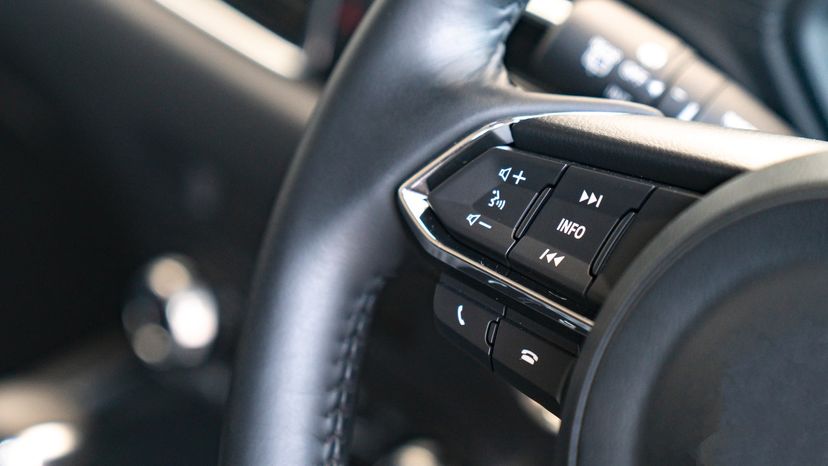
Cruise control is an invaluable feature on American cars. Without cruise control, long road trips would be more tiring, for the driver at least, and those of us suffering from lead-foot syndrome would probably get a lot more speeding tickets.
Cruise control is far more common on American cars than European cars, because the roads in America are generally bigger and straighter, and destinations are farther apart. With traffic continually increasing, basic cruise control is becoming less useful, but instead of becoming obsolete, cruise control systems are adapting to this new reality -- soon, cars will be equipped with adaptive cruise control, which will allow your car to follow the car in front of it while continually adjusting speed to maintain a safe distance.
In this article, we'll learn how a conventional cruise control system works, and then we'll take a look at adaptive cruise control systems that are under development.
What Cruise Control Does
Cruise control acceleration and deceleration, controlling the cruise control, adaptive cruise control.
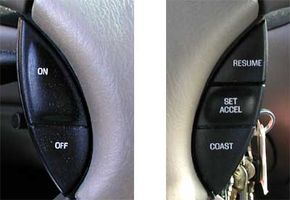
The cruise control system actually has a lot of functions other than controlling the speed of your car. For instance, the cruise control pictured below can accelerate or decelerate the car by 1 mph with the tap of a button. Hit the button five times to go 5 mph faster. There are also several important safety features -- the cruise control will disengage as soon as you hit the brake pedal, and it won't engage at speeds less than 25 mph (40 kph).
The system pictured below has five buttons: On, Off, Set/Accel, Resume and Coast. It also has a sixth control -- the brake pedal, and if your car has a manual transmission the clutch pedal is also hooked up to the cruise control.
- The on and off buttons don't actually do much. Hitting the on button does not do anything except tell the car that you might be hitting another button soon. The off button turns the cruise control off even if it is engaged. Some cruise controls don't have these buttons; instead, they turn off when the driver hits the brakes, and turn on when the driver hits the set button.
- The set/accel button tells the car to maintain the speed you are currently driving. If you hit the set button at 45 mph, the car will maintain your speed at 45 mph. Holding down the set/accel button will make the car accelerate; and on this car, tapping it once will make the car go 1 mph faster.
- If you recently disengaged the cruise control by hitting the brake pedal, hitting the resume button will command the car to accelerate back to the most recent speed setting.
- Holding down the coast button will cause the car to decelerate, just as if you took your foot completely off the gas. On this car, tapping the coast button once will cause the car to slow down by 1 mph.
- The brake pedal and clutch pedal each have a switch that disengages the cruise control as soon as the pedal is pressed, so you can shut off the cruise control with a light tap on the brake or clutch.
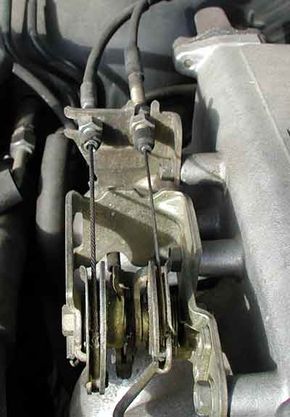
The cruise control system controls the speed of your car the same way you do -- by adjusting the throttle position . But cruise control actuates the throttle valve by a cable connected to an actuator , instead of by pressing a pedal. The throttle valve controls the power and speed of the engine by limiting how much air the engine takes in (see How Fuel Injection Systems Work for more details).
In the picture above, you can see two cables connected to a pivot that moves the throttle valve. One cable comes from the accelerator pedal, and one from the actuator. When the cruise control is engaged, the actuator moves the cable connected to the pivot, which adjusts the throttle; but it also pulls on the cable that is connected to the gas pedal -- this is why your pedal moves up and down when the cruise control is engaged.
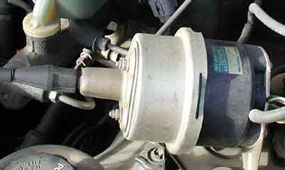
Many cars use actuators powered by engine vacuum to open and close the throttle. These systems use a small, electronically-controlled valve to regulate the vacuum in a diaphragm. This works in a similar way to the brake booster , which provides power to your brake system.
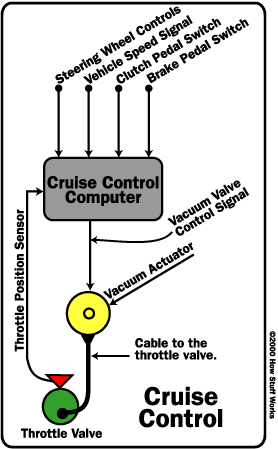
The brain of a cruise control system is a small computer that is normally found under the hood or behind the dashboard. It connects to the throttle control seen in the previous section, as well as several sensors. The diagram below shows the inputs and outputs of a typical cruise control system.
A good cruise control system accelerates aggressively to the desired speed without overshooting, and then maintains that speed with little deviation no matter how much weight is in the car, or how steep the hill you drive up. Controlling the speed of a car is a classic application of control system theory . The cruise control system controls the speed of the car by adjusting the throttle position, so it needs sensors to tell it the speed and throttle position. It also needs to monitor the controls so it can tell what the desired speed is and when to disengage.
The most important input is the speed signal; the cruise control system does a lot with this signal. First, let's start with one of the most basic control systems you could have -- a proportional control .
In a proportional control system, the cruise control adjusts the throttle proportional to the error, the error being the difference between the desired speed and the actual speed. So, if the cruise control is set at 60 mph and the car is going 50 mph, the throttle position will be open quite far. When the car is going 55 mph, the throttle position opening will be only half of what it was before. The result is that the closer the car gets to the desired speed, the slower it accelerates. Also, if you were on a steep enough hill, the car might not accelerate at all.
Most cruise control systems use a control scheme called proportional-integral-derivative control (a.k.a. PID control). Don't worry, you don't need to know any calculus to make it through this explanation -- just remember that:
- The integral of speed is distance.
- The derivative of speed is acceleration.
A PID control system uses these three factors -- proportional, integral and derivative, calculating each individually and adding them to get the throttle position.
We've already discussed the proportional factor. The integral factor is based on the time integral of the vehicle speed error . Translation: the difference between the distance your car actually traveled and the distance it would have traveled if it were going at the desired speed, calculated over a set period of time. This factor helps the car deal with hills, and also helps it settle into the correct speed and stay there. Let's say your car starts to go up a hill and slows down. The proportional control increases the throttle a little, but you may still slow down. After a little while, the integral control will start to increase the throttle, opening it more and more, because the longer the car maintains a speed slower than the desired speed, the larger the distance error gets.
Now let's add in the final factor, the derivative . Remember that the derivative of speed is acceleration. This factor helps the cruise control respond quickly to changes, such as hills. If the car starts to slow down, the cruise control can see this acceleration (slowing down and speeding up are both acceleration) before the speed can actually change much, and respond by increasing the throttle position.
Two companies are developing a more advanced cruise control that can automatically adjust a car's speed to maintain a safe following distance. This new technology, called adaptive cruise control , uses forward-looking radar , installed behind the grill of a vehicle, to detect the speed and distance of the vehicle ahead of it.
Adaptive cruise control is similar to conventional cruise control in that it maintains the vehicle's pre-set speed. However, unlike conventional cruise control, this new system can automatically adjust speed in order to maintain a proper distance between vehicles in the same lane. This is achieved through a radar headway sensor , digital signal processor and longitudinal controller . If the lead vehicle slows down, or if another object is detected, the system sends a signal to the engine or braking system to decelerate. Then, when the road is clear, the system will re-accelerate the vehicle back to the set speed.
The 77-GHz Autocruise radar system made by TRW has a forward-looking range of up to 492 feet (150 meters), and operates at vehicle speeds ranging from 18.6 miles per hour (30 kph) to 111 mph (180 kph). Delphi's 76-GHz system can also detect objects as far away as 492 feet, and operates at speeds as low as 20 mph (32 kph).
Adaptive cruise control is just a preview of the technology being developed by both companies. These systems are being enhanced to include collision warning capabilities that will warn drivers through visual and/or audio signals that a collision is imminent and that braking or evasive steering is needed.
For more information on cruise control, check out the links below.
Cruise Control FAQ
How does cruise control work, how does adaptive cruise control work, will adaptive cruise control stop the vehicle, when would you use cruise control, how useful is cruise control, lots more information, related articles.
- How Car Engines Work
- How Brakes Work
- How Manual Transmissions Work
- How Fuel Injection Systems Work
- How Radar Detectors Work
- Ignition System Quiz
More Great Links
- BMW: Cruise-control-equipped motorcycle
- Cruise Control Block Diagram
- Cruise Control Installers' Instructions
- Cruise Control Service Tips
Please copy/paste the following text to properly cite this HowStuffWorks.com article:
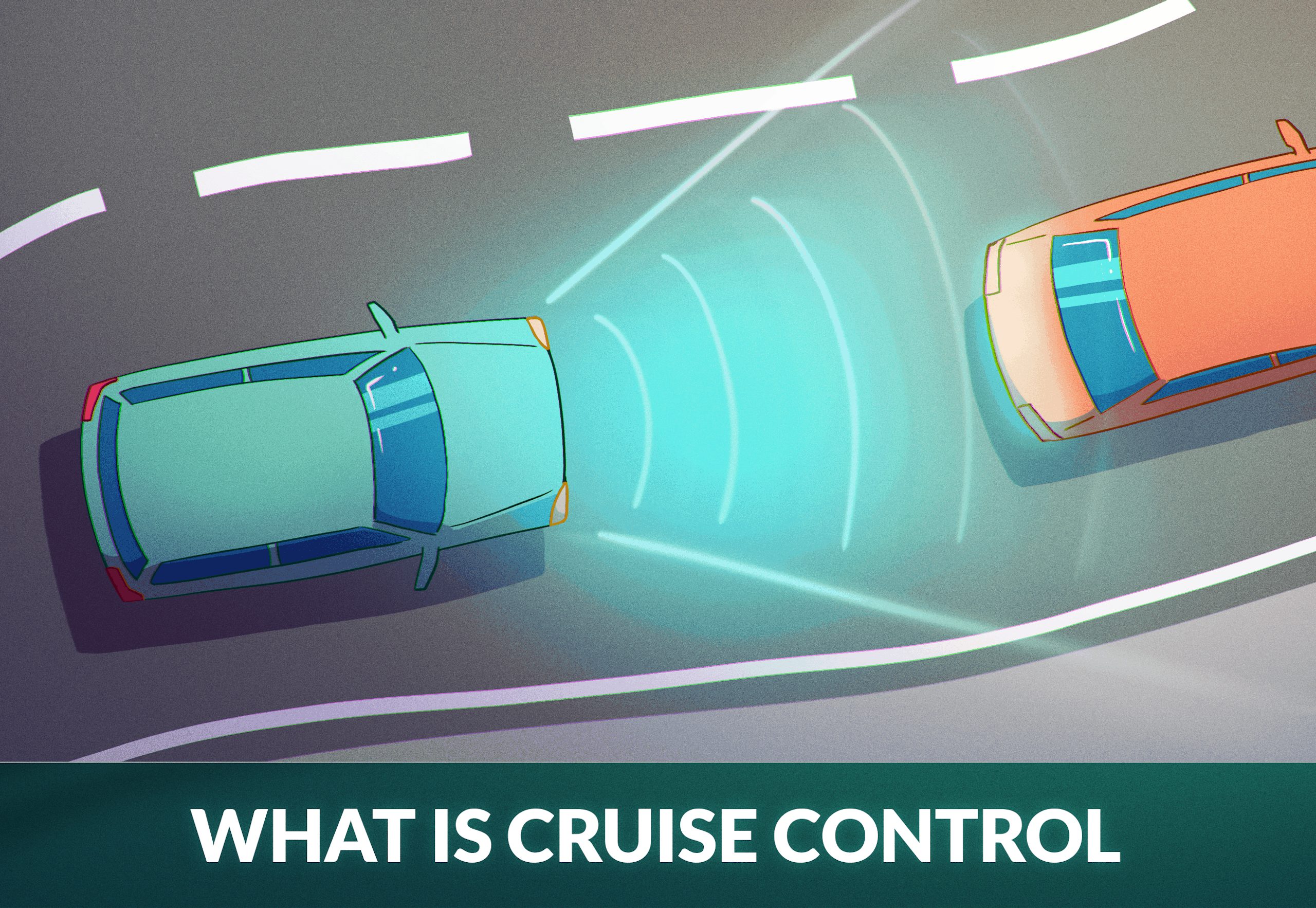
Cruise Control Explained – All You Need to Know
Cruise control has come a long way since first invented and patented by Ralph Teetor in 1950, who originally named it the “Speedostat”. Chrysler Corporation was the first manufacturer to offer the groundbreaking mechanism as an option on several of its luxury vehicle models nine years later. Today, cruise control is rapidly becoming the standard on all new vehicles, providing drivers with increased convenience on their daily drive.
As you’re learning how to operate a vehicle , understanding cruise control will help increase your comfort behind the wheel and knowledge of driving.

What is Cruise Control?
Cruise control is an electronic device within your vehicle that controls the speed of your vehicle. It allows the driver to maintain a constant speed of 25 mph without holding their foot on the accelerator. Although the feature has been around for 70 years, automotive manufacturers continue to improve upon the technology to provide drivers with increased comfort, luxury, and convenience whenever they’re behind the wheel.
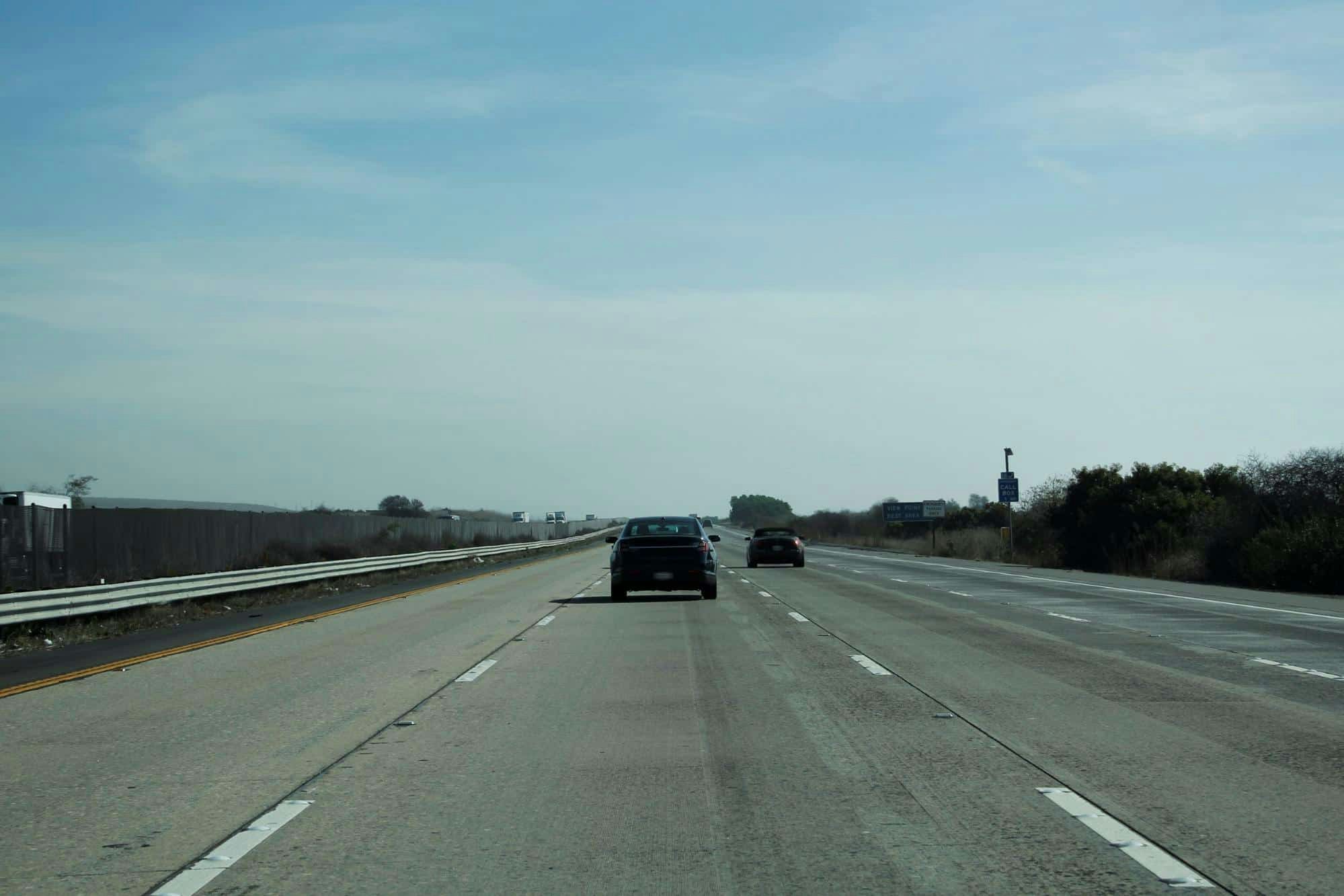
Different Types of Cruise Control
There are 3 types of cruise control systems.
- Speed Limiter
- Adaptive Cruise Control
- Semi-autonomous Cruise Control
What is a Speed Limiter?
A speed limiter will limit how fast the driver can accelerate behind the wheel. All modern vehicles contain a standard speed limiter capping speed between 120 mph and 180 mph depending to protect the vehicle’s engine and discourage reckless driving. However, an additional limiter can be added as an option in many European-made cars, as well as Tesla, Ford, and Nissan. Drivers are still required to keep their foot on the pedal to keep their vehicle in motion, but will not be able to accelerate past a predefined speed limit.
What is Adaptive Cruise Control?
Adaptive cruise c ontrol uses sensors around the vehicle’s exterior to maintain speed while keeping a safe following distance from the car ahead. The system will slow you down and speed you up as the flow of traffic fluctuates throughout your commute, removing a lot of the stress from daily driving. However, adaptive cruise control may not work well in bad weather or protect you from sudden movements, so you will want to always keep your full attention on the road.
What is Semi-autonomous Cruise Control?
Luxury automakers such as Tesla and Audi are implementing the newest rendition of cruise control on their latest vehicle models – Semi-autonomous Cruise Control. It works largely the same as adaptive cruise control, but assists drivers with lane guidance and steering. There are several variations of semi-autonomous cruise control that include additional convenience features for the driver.
How to Use Cruise Control – 6 Step Guide
These are the steps to using cruise control effectively.
- Observe weather conditions
- Build speed
- Engage cruise control
- Set cruise control
- Watch the road and steer
- Brake to disengage
1 – Observe weather conditions
As mentioned, cruise control may become inconsistent in rainy, snowy, or otherwise hazardous conditions. If you must drive in this situation, it may be a better idea to do so manually. Cruise control works best on a clear day with constant traffic flow.

2 – Build speed
Accelerate to your desired speed as you prepare to activate cruise control. US highways have posted speed limits between 55 mph and 75 mph. Do not attempt to set cruise control when you are traveling over the speed limit.
3 – Engage cruise control
Once you’ve reached your desired speed, engage the cruise control. This step will vary widely based on your vehicle make and model, however, many cruise control settings are accessible from the steering wheel controls. Check your owner’s manual for further information.
4 – Set cruise control
After turning on cruise control, you’ll need to set your desired speed. Many systems set the cruise control at the current speed, while others require you to manually set one. You can increase and decrease this speed as needed without interrupting the mechanism.
5 – Watch the road and steer
Watching the road is essential when cruise control is engaged. Cruise control is not a substitute for a human driver and will require supervision at every step. If you are using a semi-autonomous system, you will not need to steer but will need to keep at least one hand on the wheel for safety measures.
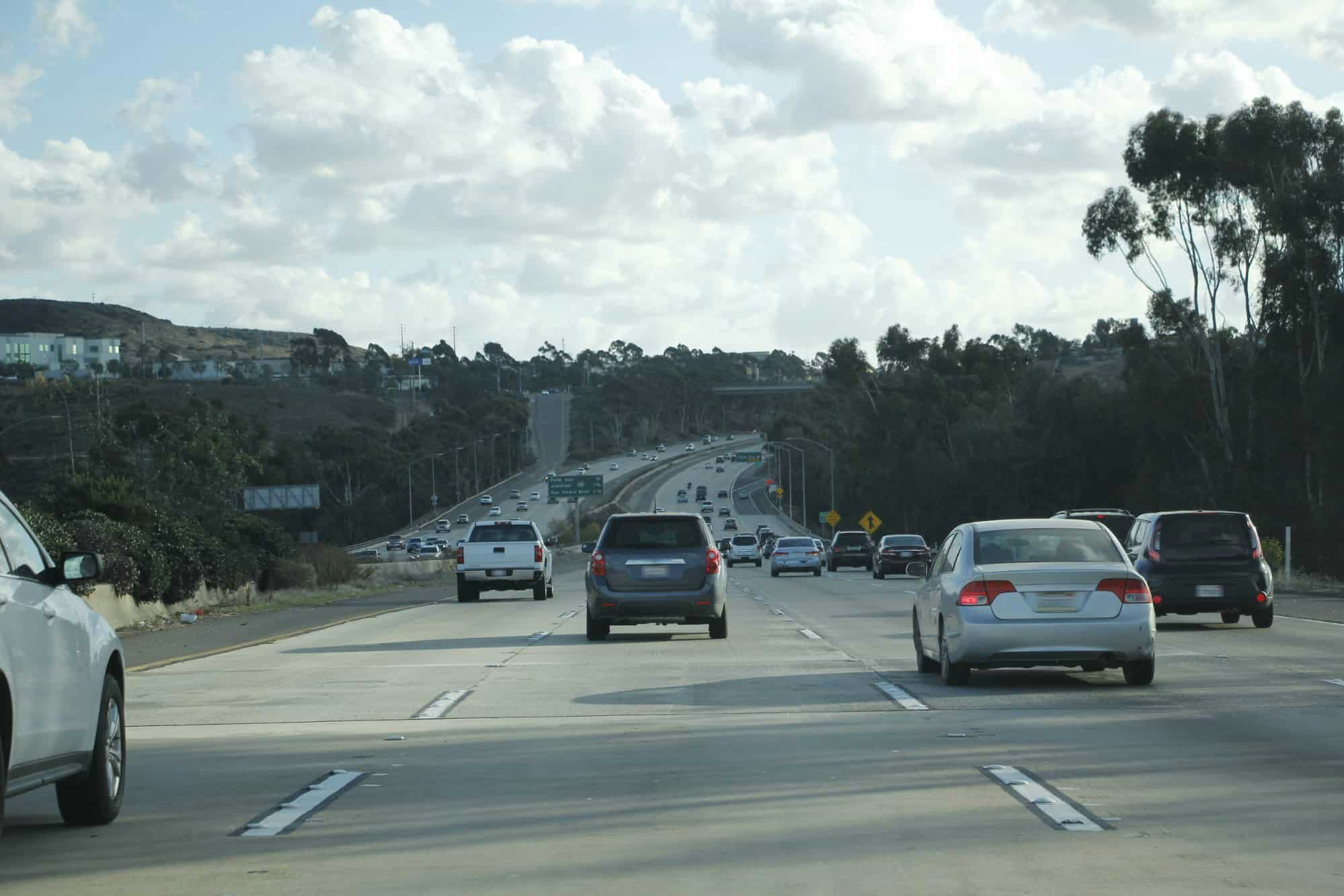
6 – Brake to disengage
When cruise control is no longer needed, or you need to quickly make a maneuver, simply apply pressure to the brakes to disengage the system. Once deactivated, you will be in full control of your vehicle once again.
When NOT to Use Cruise Control
While cruise control is a convenient feature for modern drivers, it is not perfect for all circumstances. In fact, utilizing the system can be quite dangerous if you’re not careful. Be sure not to use cruise control under these conditions.
Heavy Traffic
Heavy, or stop-and-go traffic is not ideal for safely using cruise control. When engaging cruise control on the highway, ensure your lane is clear and there are no vehicles stopping ahead.
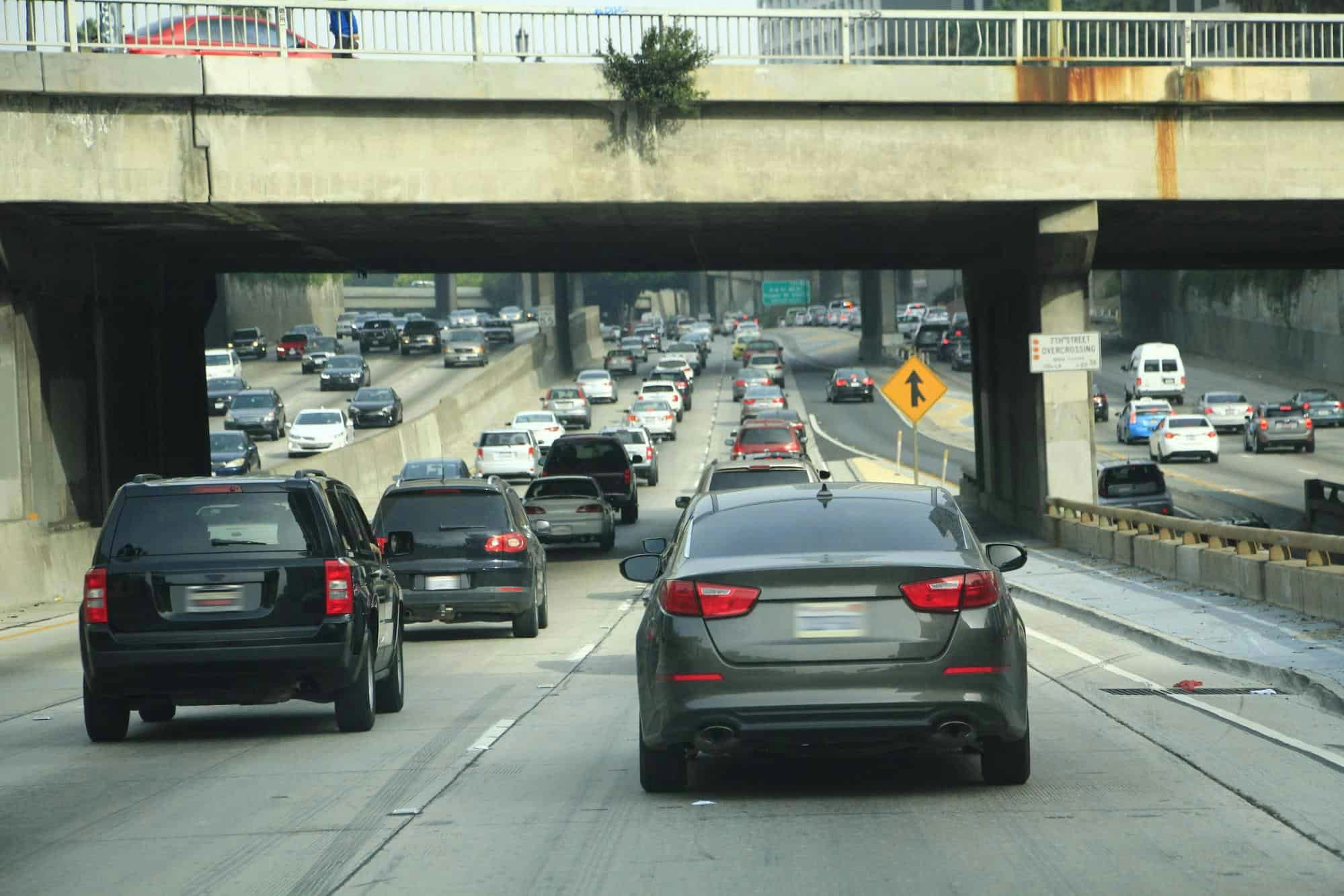
Wet or Icy Conditions
You need to be driving slowly while on wet and icy roads. While cruise control keeps a constant, predetermined speed, it takes away a lot of the manual control needed to stay safe when it’s raining or snowing.
City Driving
While driving through the city, you’ll face a number of stop lights and stop signs that will require manual braking. This action will automatically disengage cruise control.
Winding Roads
Winding roads require more attention than straight, flat streets. Cruise control systems, even adaptable cruise control, may not always detect these streets correctly, causing accidents.
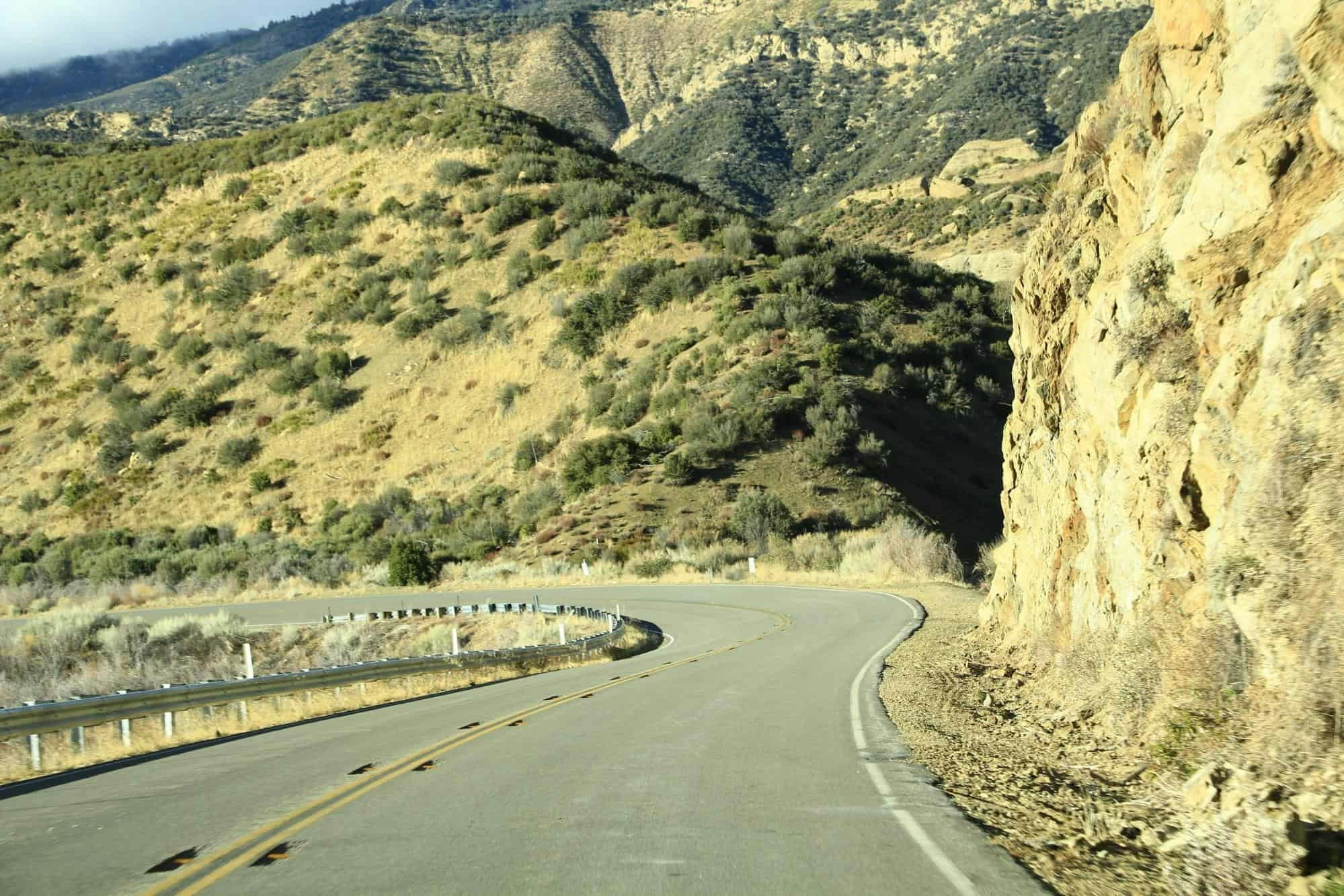
Fatigued Driving
Driving while fatigued is never a good idea, but even less so while using cruise control. Utilizing the system may add to your fatigue, as you give your vehicle more control of the journey. If you’re even the least bit tired, you should never turn on cruise control.
As you can see, cruise control is a great way to relieve much of the stress that comes with everyday driving. The constant rate of speed can also drastically improve fuel efficiency for longer drivers. Cruise control has had a positive impact on the driving industry for 70 years and shows no signs of disappearing anytime soon.

550+ exam-like questions
All you need to ace your test
Perfect for first-timers, renewals and senior citizens
Recommended articles
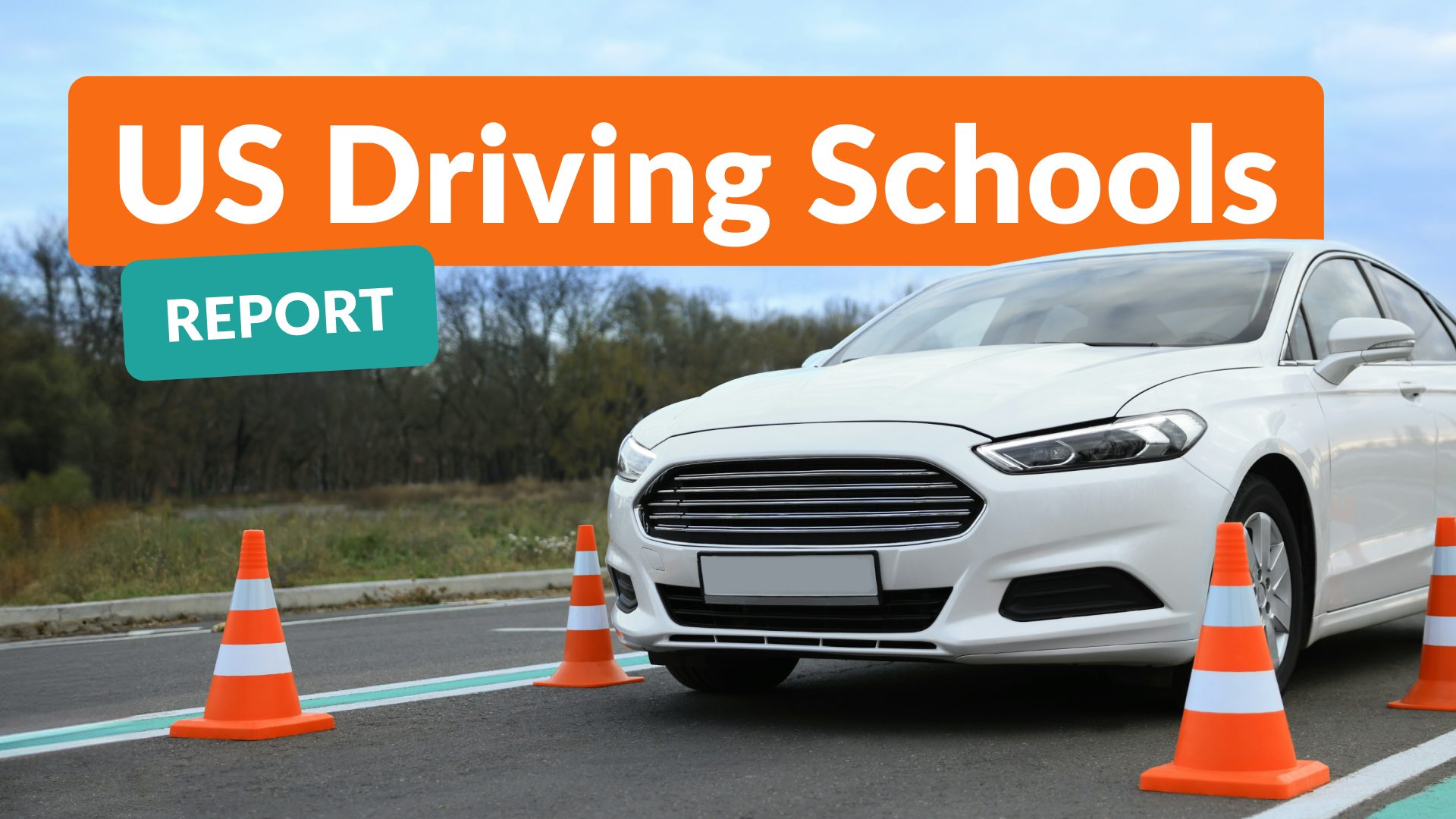
Driving School Costs Report – The Cheapest and Most Expensive States
For many, the ability to drive is not just about mobility—it’s a rite of passage that symbolizes freedom and the thrill of charting one’s own course. the anticipation of sitting behind the wheel for the first time is a universal dream, yet for many aspiring drivers in the united states, this dream comes with variable […].
Distracted Driving Report – The States With the Least and Most Distracted Driving
In april 2024, the national highway traffic safety administration (nhtsa) released data for 2022 that illustrated traffic deaths due to distracted driving increased by 12 percent from 2020 but decreased compared to 2021 to 6%. every year, thousands of drivers and passengers are fatally injured as a result of distracted driving. in 2022, roughly 2,109 […].
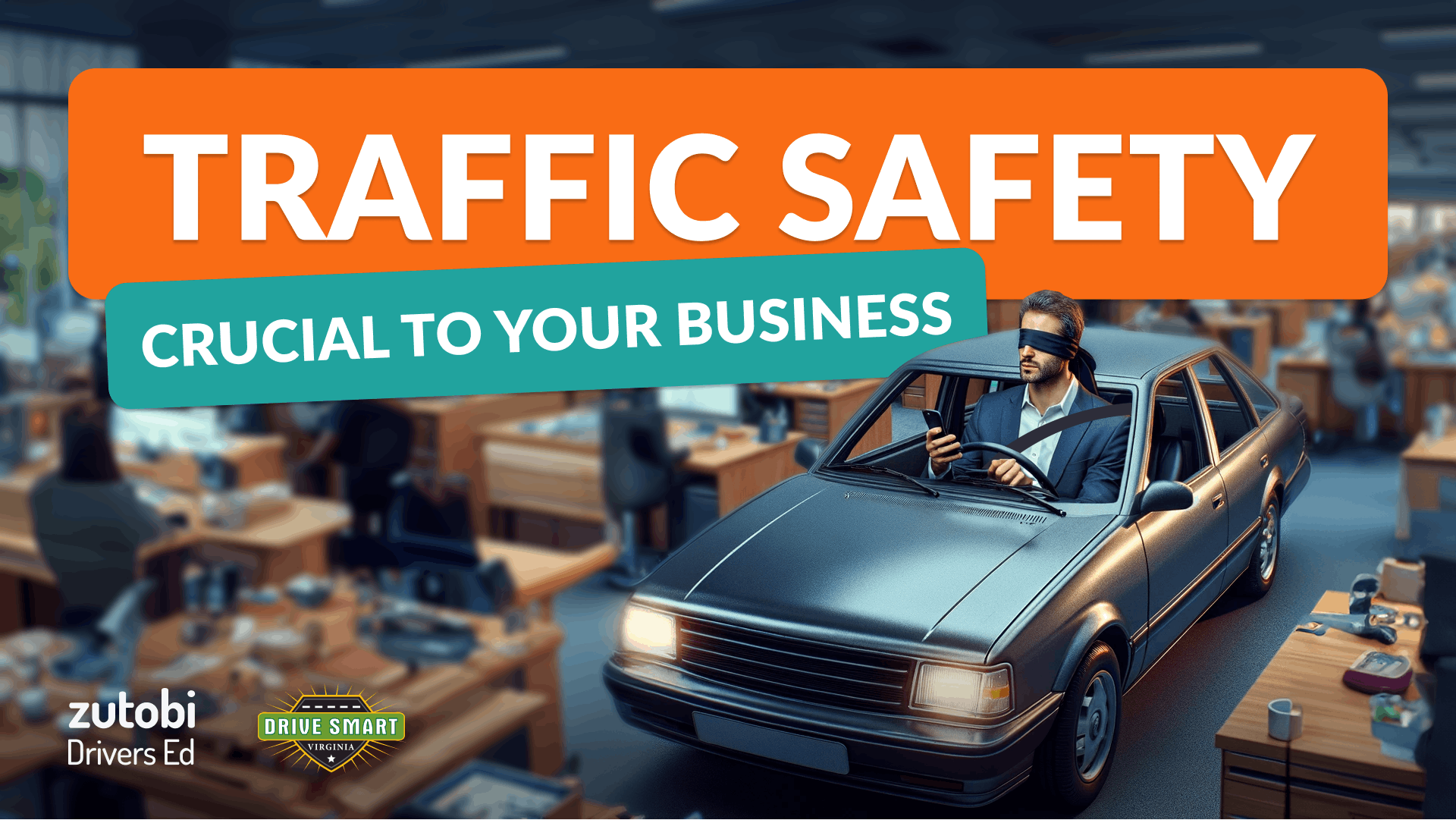
Traffic Safety is Crucial to Your Business
By kristin pettway, drive smart virginia april is distracted driving awareness month and the perfect opportunity for workplaces to review their traffic safety policies and communications. traffic crashes are the leading cause of workplace deaths in america. even if you don’t have a fleet of vehicles, safe driving should still matter to your business. after […].
Ace your DMV test, guaranteed
Get started
Best of the Zutobi blog
- Learner’s Permit Ultimate Guide
- Driving Test Ultimate Guide
- Traffic Lights Guide
- How to Pass the DMV Permit Test
- How to Pass the Driving Test
- Common Reasons For Failing the Road Test
- International Driver’s Permit Guide
- Driver’s License Renewal
- How to Get Your US Driver’s License
- How to Prepare for Your Road Test
- How to Get a Driver’s Permit
- Behind-The-Wheel training
- Terms & conditions
- Privacy policy
- Do Not Sell My Personal Information
- Subscription terms
- Terms & policies
Practice Tests
- Car Practice Tests
- CDL Practice Tests
- Motorcycle Practice Tests
What is cruise control in a car? Meaning and how does it work?
Cruising on the highway can be a lot of fun. However, it demands maintaining a constant speed for a long time. To achieve that, you need to press the accelerator pedal continuously, which can get tiring after a while. That’s when the cruise control feature of your car comes into play. So, what exactly does it do and how does it work? This article explains cruise control in a car and how to use it in different driving conditions. So, without stepping on the ‘brake’ pedal, read on!

What is cruise control in a car?
It is a system that accurately maintains the speed set by the driver without any external intervention. It automatically controls the speed of a car and only allows the vehicle to hit a speed set by the driver. It does not allow the car to cross that speed limit. This feature has become common among modern cars. You can even find this feature in the top-spec variants of some of the affordable hatchbacks and sedans.
How does the cruise control system work?
Cruise control in a car replicates the inputs of a driver to control the vehicle’s speed. But instead of pressing the accelerator pedal, it uses a different mechanism to maintain a constant cruising speed.
Initially, the system used a cable to control the accelerator (throttle valve). You can find these mechanisms in older cars. It adjusted the vehicle's speed by engaging the throttle with the help of an actuator that is controlled by a cable. The throttle valve is responsible for the power and speed generated by the engine. So, depending on the speed set by the driver, the system automatically adjusted the throttle position.
But with the advent of technology in the automotive industry, the cruise control system in modern cars entirely relies on electronics. Instead of a cable, the system now communicates with the throttle via various sensors connected to a computer (ECU - Electronic Control Unit). So, when you set a speed, the ECU calculates the throttle position and engages the throttle wirelessly.
The system constantly maintains the speed set by you (driver) irrespective of road conditions. For example, if there’s an incline ahead, cruise control adjusts the throttle accordingly to maintain the same speed.
How to use cruise control?
Before engaging the cruise control in a car, remember that the system is not intended to be used in adverse weather conditions. For example, you may refrain from driving the car at cruising speeds when it’s raining heavily. The low visibility and unpredictable road conditions make it unsafe to drive at such speeds. So, always be mindful of the weather condition and your surroundings before engaging the system.
Here are the steps to use cruise control.
Step 1 - Before activating cruise control, build up speed by accelerating the car. However, do not cross the speed limit of that particular road/highway.
Step 2 - Once your car reaches the desired speed, activate cruise control. Generally, the system activation button will be on the steering wheel. However, locating the exact button when the vehicle is parked is better to avoid any distractions while driving.
Step 3 - Next, you can take your foot off the accelerator pedal. If you have set the cruise control correctly, the car should maintain the cruising speed.
Step 4 - Keep your eyes on the road as it is very easy to get distracted when the car is accelerating automatically.
Step 5 - If you wish to accelerate when the cruise control is engaged, you can press the ‘+’ button on the steering wheel to briefly engage the accelerator pedal.
Step 6 - To decelerate, press the ‘-’ button on the steering wheel. You can also tap on the brake pedal. However, as a safety precaution, almost all cars will deactivate the cruise control as soon as you press the brake pedal.
The buttons to activate cruise control or accelerate/decelerate may vary from one car to another. So, do check the owner’s manual before fiddling around with the system. It’s better if you are familiar with the controls before driving the vehicle, as it will avoid unnecessary distractions.
How to install cruise control in a car?
Can you install cruise control in a car? The answer is both yes and no. You may install an aftermarket kit if it’s an old car that does not rely on electronics to control all the engine-related functions. But installing such a kit becomes almost impossible in modern cars due to the complex electronics.
It is a complex process to install the system in new cars as you have to fiddle with electronics, and it also requires the fitment of hardware. So, it can only be done during the time of car manufacturing. Moreover, if you try installing an aftermarket kit, you may void the warranty offered by the OEM (Original Equipment Manufacturer). On top of that, it is not recommended to go for an aftermarket cruise control kit as it may compromise safety.
Newly launched cars are equipped with cruise control except for a few entry-level models. So, instead of investing in retrofitting a system, it's better and safer to spend that money on buying a car with a built-in system.
Adaptive cruise control
The new technology also allows the system to automatically adjust the car's speed depending on the speed of the vehicle ahead. This feature is known as adaptive cruise control. It ensures that the car maintains a safe distance from the vehicle ahead despite the constant change in speed of the vehicle moving ahead. It is instrumental in highways or during rush hour traffic and reduces driver fatigue.
It is also a level 1 autonomous driving system. The system uses radar sensors to calculate the speed and distance of the car ahead. For instance, if the vehicle in front of you slows down/speeds up, a car with adaptive cruise control will reduce speed/accelerate automatically without any external inputs.
You can find this feature in premium cars. But gradually, it is trickling down to not so expensive cars as well. Adaptive cruise control is a part of an advanced driver assistance system.
Pros and cons of cruise control
Cruise control makes driving easy and convenient, and at the same time, it also takes care of safety. But like every other feature, it has its own set of advantages and disadvantages, which are elaborated in the following section.
Below are some of the pros of the cruise control system.
Reduces driver fatigue: The primary role of cruise control is to maintain a constant speed without you having to step on the accelerator pedal. That means you can rest your right foot and can stay relaxed. It is helpful when you drive long distances on highways where you need to maintain a constant speed for long durations.
Improves fuel economy: When maintaining a constant speed, the engine will not get stressed as it need not change the intensity of operation. To put it in a simple way, when the engine runs at constant RPMs (Revolutions Per Minute) , it consumes less fuel. Hence, when driving long distances on highways, the cruise control system can improve fuel economy.
Helps to drive within the speed limit: You may drive at normal speed on busy urban roads. But when you hit the wide and smooth highways, you may end up crossing the speed limit. You may not even realise that you have crossed the speed limit until you glance at the speedometer. Cruise control can help you in this regard as you can easily set a speed limit and let the system do the work. The system will not allow the car to go over the speed set by you.
Increase/decrease speed with a click of a button: Typically, you use the accelerator and brake pedal to increase/decrease the speed of your car. But when the cruise control is engaged, you can even use the buttons to do the job for you. However, ensure that you are familiar with the functions of the buttons, as it may feel unnatural in the beginning. It is best to practice using the buttons in a safe environment before using them on public roads.
Works well with automatic cars: Cruise control works best with automatic cars as you need not worry about changing gears. The ECU or the onboard computer shifts the gears automatically when there is a change in speed and works well when cruising automatically. It means you only need to focus on steering the vehicle.
As mentioned earlier, cruise control also has some cons, which are listed below.
Limited use on Indian roads: Cruise control is suited for wide and long highways where drivers follow the rules. Although India has some excellent highways, many drivers may disregard rules which creates an unpredictable environment. Also, cattle, dogs and other animals may venture into public roads and make the situation even more tricky. Hence, it may be challenging to cruise at high-speeds.
Hampers reaction time: As mentioned above, the roads in India are unpredictable. You may have to perform emergency braking to avoid any obstacles on the road. When driving with manual controls, your right foot will be on the accelerator pedal, and it is easy to move your foot to step on the brake pedal in an emergency. But, when using cruise control, your right foot will be resting on the floor of the car, and it may take a bit more time to reach the brake pedal. This difference in reaction time may be the difference between you avoiding an obstacle or crashing into it.
Can induce drowsiness: If you use cruise control for long durations, you may end up feeling drowsy. Since the car is accelerating at a constant speed, your alertness level may drop in the long run. Hence, it is recommended that you manually control the vehicle once every 10-15 minutes when using the automatic cruising feature on highways.
Cannot use at night: Cruise control is of no use during night drives as the visibility is poor. Even with well-lit roads, the visibility is not as good as daylight. So, allowing the car to maintain a constant speed may be a safety concern, even on roads that are familiar to you.
It does not work well with manual cars: In a manual car, you have to change gears by yourself. The cruise control will handle the acceleration/deceleration, but you still need to shift the gears manually to maintain the optimum RPM. It can be irritating at times when you need to slow down and accelerate immediately. It may not be a dealbreaker, but it kind of refrains you from experiencing the full potential of the automatic cruising system.
Cruise control vs adaptive cruise control: Key differences
The below table highlights the key differences between cruise control and adaptive cruise control.
What is the difference between cruise control and speed limiter?
Sometimes you may get confused between cruise control and speed limiter as both are related to the car's speed. Refer to the table below to understand the difference between both the systems.
List of cruise control cars In India
Cruise control is a feature that we can see in a lot of cars. Gone are the days when this feature was limited to premium vehicles. Even vehicles with affordable price tags are equipped with intelligent features. Here’s the list of popular cars with the automatic cruising system.
List of adaptive cruise control cars in India
Adaptive cruise control is the more advanced version of the standard automatic cruising system. Currently, this system can be seen only in premium cars in India. Below is the list of popular cars with adaptive cruise control.
Frequently asked questions
Here are some of the most commonly asked questions related to cruise control in cars.
No, it is not a standard feature in cars. However, almost all vehicles costing above Rs. 5 lakhs are equipped with cruise control.
It is not advisable to install an aftermarket cruise control kit in your car as new vehicles have complex electronics. Moreover, installing such a kit involves a complicated process, and it may also void the warranty provided by the car manufacturer.
Typically, the cruise control button is located on the steering wheel for easy access. However, the location of the button may vary depending on the make and model.
Yes, you can use cruise control in a manual car. However, you need to manually control the gear shifts when the vehicle slows down or accelerates when the system is engaged.
Maruti Swift vs Hyundai Exter
Team Acko Drive Jun 12, 2024
Tata Tiago EV vs Hyundai Exter
Team AckoDrive Jun 11, 2024
Tata Altroz vs Hyundai Exter
Team Ackodrive Jun 11, 2024
Hyundai Exter vs Hyundai Venue
Team Acko Drive Jun 11, 2024
Maruti Swift vs Tata Altroz
Team Ackodrive Jun 10, 2024
All Articles

What Is Adaptive Cruise Control?

NatalyaBurova | Getty Images
Advanced Driver-Assist Systems Make Our Lives Easier (and Safer)
Sadly, millions of people are involved in car crashes every year. According to the CDC, about 90 people die each day in the U.S. as a result of a car crash. However, crash fatalities are decreasing almost every year, even though there are more cars on the road. While the reasons for the decline aren’t clear-cut, advances in overall vehicle safety and advanced driver-assist systems seem to be contributing to the decline.
Advertisement
While most of today’s cars offer multiple driver-assist features, cruise control is still arguably one of the greatest advancements in the history of car technology. Interestingly, the feature was first invented over 60 years ago. Since then, there have been notable improvements that make the latest versions of cruise control safer and much more useful.
The invention of cruise control, along with its evolution to adaptive cruise control, marked the beginning of what may eventually lead to self-driving cars. Continue reading to learn all about adaptive cruise control.

Sara Dalsecco | EyeEm
The History of Cruise Control
Various forms of cruise control were used in cars dating all the way back to the beginning of the twentieth century. However, modern cruise control was invented by American engineer Ralph Teetor in 1948. He secured a patent for the technology in 1950, and it made its way into passenger cars by the 1960s.
Teeter came up with the idea while riding along in a car with his lawyer. As a passenger in the car, he noticed that every time his lawyer talked, the car changed speeds.
Adaptive cruise control’s roots date back to 1992 when Mitsubishi launched a Lidar-based distance-detection system in Japan. However, the technology didn’t adjust the car’s speed on its own, but rather alerted the driver to take action.
By 1995, Mitsubishi improved the system to adjust the car’s speed on its own via transmission and throttle management, though actual braking was still controlled by the driver. In the early 2000s, many automakers started offering their own, more advanced versions of adaptive cruise control.

LeshkaSmok | Getty Images
What Is Cruise Control?
To most people, this may seem like a silly question. However, to better understand the evolution of cruise control, it’s important to take a look at its basic functionality.
Cruise control is a system designed to automatically control a vehicle’s speed, which the driver must pre-set after activating. It’s most useful for long highway or freeway drives, and/or in areas where there’s not much traffic, or a need to stop often. Cruise control isn’t very useful at low speeds, or in areas where there are many stop signs or traffic lights.
With cruise control engaged, you don’t have to keep your foot on the accelerator pedal or work to maintain a consistent speed. This means you can more easily adjust your seating position, rest your legs and feet, and focus on other aspects of driving. As an aside, keeping a car at a consistent speed typically leads to better fuel economy.
The controls and buttons for cruise control vary among vehicles. Typically, they’re found on either the steering wheel or a stalk on the steering column. The driver holds a steady speed using the accelerator pedal and then “sets” the speed before taking their foot off the pedal. There are also “+” and “-” buttons to change speed incrementally, as well as a button to disengage the feature and/or resume the pre-set speed. Touching the brake pedal immediately turns off cruise control.

Volvo Cars of North America |
Adaptive cruise control (ACC) is a system that helps cars stay within the speed limit or the pre-set speed while maintaining a safe, predetermined distance behind a “leading” car. When the vehicle in front of you speeds up or slows down, the system adjusts the car’s speed as necessary.
Some advanced adaptive cruise control systems have “stop-and-go” technology – sometimes called traffic jam assist. This means the system will, when necessary, bring the car to a complete stop, wait for traffic to clear or for the leading car to begin moving, and then accelerate again to the speed limit or pre-set speed. The system continues to maintain a safe distance throughout these maneuvers.
While adaptive cruise control is the most commonly used term for this technology, different automakers have different names for it. If you read that a car offers smart cruise control, active cruise control, automatic cruise control, dynamic cruise control, radar cruise control, or intelligent cruise control, be sure to find out exactly what the feature’s capabilities are.
Most importantly, find out if the feature adjusts the car’s speed on its own, and if it has stop-and-go capability. Be sure to test-drive any vehicle before buying or leasing it. Get acquainted with the adaptive cruise control feature during your test drive. Make sure you understand exactly how it works and what it’s capable of before moving forward with the transaction.

How Does Adaptive Cruise Control Work?
Various car manufacturers have different technologies for adaptive cruise control. However, the basic idea is the same. The car uses either a laser or radar to measure the distance to the leading vehicle. These are essentially the same lasers and radars used for features like forward collision warning and automatic emergency braking. They’re also used in vehicles with semi-autonomous technology. For this reason, it’s fair to say that cruise control was the first step toward what may eventually evolve into self-driving vehicle technology.
It’s important to note that some laser-based adaptive cruise control systems won’t function properly in inclement weather and/or if the sensors are wet or dirty. Radar-based systems are largely unaffected by weather or debris. While more systems employ radar than lasers, be sure to find out which technology your car – or the car you’re planning on buying – uses.
Adaptive cruise control isn’t often a standalone technology. Instead, it’s usually part of a suite of safety systems that work together. If a car has adaptive cruise control, it likely also has forward collision warning and automatic emergency braking. Some more advanced vehicles also have pedestrian detection, as well as systems that help keep your car in its lane, or even help steer the car on the highway when adaptive cruise control is engaged.

dimarik | Getty Images
What Are the Limitations of Adaptive Cruise Control?
Like almost all vehicle safety technologies, adaptive cruise control is constantly improving. However, it’s still not a substitute for a human driver. While adaptive cruise control is meant to reduce stress and make driving easier, you still need to remain aware, engaged, and ready to take over the accelerator and brake pedal at a moment’s notice.
Adaptive cruise control isn’t meant to steer the car, though other complementary safety systems may help with steering as well. Adaptive cruise control systems with stop-and-go technology will monitor the car in front of you and adjust the speed accordingly. Some systems even observe speed limit signs and slow down around tight curves. With that said, if another driver slams on the brakes in front of you, cuts you off, or makes a sudden maneuver, you should immediately take over. Remember, some cruise control systems either won’t operate or shouldn’t be used in inclement weather.
While your car may also have features like automatic emergency braking, you can’t count on those features to do the job for you. Instead, the features are there just in case you don’t react quickly enough.

Mercedes-Benz USA |
Should You Avoid Cars That Don’t Have Adaptive Cruise Control?
When searching for a new or used car, you should try to prioritize finding a vehicle with as many of the latest advanced driver-assist systems as possible. This is especially true if you plan to keep the car for many years.
Safety is of the utmost importance when shopping for a car. As vehicle safety systems are improving rapidly, it doesn’t take long for a car’s safety systems to become dated or even considered obsolete. For this reason, making sure you have the latest advanced driver-assist systems means you’ll be able to keep your car for a longer period of time before its features are no longer consistent with the most up-to-date technologies.

Chesky_W | Getty Images
Is Adaptive Cruise Control Worth it?
It depends. While any technology that will make your life easier and safer is arguably worth it, adaptive cruise control can be a pricey option in some cars. You may have to buy a trim above the base and/or add a package. However, in many cars, adaptive cruise control comes standard, usually as part of a full suite of active safety technologies.
When you’re shopping for a car, make sure it comes equipped with as many safety systems as possible. If you have your eyes on a vehicle, and you learn that it doesn’t include a suite of safety systems, find out how much it costs to add them. If it exceeds your budget, you may want to consider a competing model that includes adaptive cruise control and other safety systems as standard.

American Honda Motor Co., Inc. |
Which Cars Have Adaptive Cruise Control?
Nearly every automaker offers adaptive cruise control. However, some systems are more advanced than others. Automakers such as Audi, BMW, Ford, Honda, Hyundai, Kia, Nissan, and Toyota are generally known for having some of the best advanced driver-assist systems, though many other brands offer adaptive cruise control technology that works well.
While advanced driver-assist systems like adaptive cruise control were once reserved for luxury cars or top-level trims on larger cars and SUVs, that’s not the case today. In fact, well-priced small cars like the Honda Civic , Mazda3 , Subaru Legacy , and Toyota Corolla come standard with adaptive cruise control. Even budget-mobiles, such as the Honda Fit and Nissan Versa offer the feature.
Many of today’s SUVs come standard with adaptive cruise control as well, and those that don’t have it on the base model still offer it as an upgrade. The feature even comes standard on some small, relatively inexpensive SUVs, including the Honda CR-V , Mazda CX-3 and CX-30 , Subaru Forester , and Toyota C-HR . To see a list of the cheapest cars and SUVs with adaptive cruise control, click here .
More on the 2021 Honda Civic
- See 2021 Honda Civic Photos »
- Find 2021 Honda Civic For Sale »
- Read the 2021 Honda Civic Full Review »
- See 2021 Compact Car Rankings »

U.S. News & World Report |
More Shopping Tools From U.S. News & World Report
If you’re in the market for a new car, check out our new car rankings to compare different models and see which vehicles offer adaptive cruise control. Also, be sure to visit our new car financing deals and lease deals pages to learn about the best current manufacturer-sponsored incentives on new cars, trucks, and SUVs.
When it comes time to move forward, use our U.S. News Best Price Program to find the dealer near you with the best pre-negotiated pricing. Shoppers who use the program to buy or lease a new car save an average of more than $3,200 off MSRP.
Browse Cars

Recommended Articles

The Safest SUVs
Cherise Threewitt June 6, 2024

Safest Small Cars
Caroline Anschutz Oct. 4, 2023

Safest Luxury Midsize SUVs
Victoria Scott July 24, 2023

23 Cheapest Cars With Adaptive Cruise Control
Kevin Linder July 2, 2020

AWD Cars With Great Gas Mileage
George Kennedy June 14, 2024

Best Luxury Car and SUV Lease Deals
Cherise Threewitt June 14, 2024
- Cruise control and adaptive cruise control in a car: How it works?

Ninad Ambre

The array of new car launches equipped with ADAS (Advanced Driver Assistance Systems) has brought in adaptive cruise control (ACC) in many cars. While cruise control isn't a new feature, adaptive cruise control is relatively new for the Indian market. Here's all you need to know about this technology.
What is cruise control?
Cruise control is a feature that lets you set a particular speed for your car and as the name suggests — 'cruise'. One doesn't need to use the throttle or accelerator to keep the car going at the set speed. This system controls and brings in some amount of automation in driving a car at a particular speed.
What is adaptive cruise control?
Further to the aforementioned automation, adaptive cruise control is a step up to add more modernisation to this tech. All cars equipped with ADAS most certainly get adaptive cruise control. In this case, once a speed is set, the car will continue to be controlled by this system but will move according to the surrounding traffic speed. That is, if the car in front of you is moving at a speed of 40kmph, adaptive cruise control will maintain a safe distance from that car and keep the speed of your car in accordance with it. The added advantage is that automatic braking will slow down/stop the car without the driver having to intervene till asked to do so by the system.
How do cruise control and adaptive cruise control work?
The cruise control system uses an actuator to control the throttle input and maintain a pre-set speed. This same servomechanism is used in adaptive cruise control too but with the application of brakes through ADAS. In a way, it mimics the way human drivers accelerate and brake in traffic and coast on a highway.
How to use cruise control?
Usually, there are buttons either on the steering wheel or on the stalks behind the steering wheel to set, reset, increase, and decrease the speed of the car. Some cars may have the activation button on the dashboard. Nonetheless, the function is the same, that is, to activate/deactivate it. You can adjust the required speed using buttons '+/-', fix it using 'SET', and cancel with 'CANCEL'. In cars with cruise control, the system's control is anyway cancelled with the application of brakes. Additionally, with 'RESET', the last memory of the set speed can be recalled. Once the process is set, the driver can leave the throttle and just focus on the steering and braking inputs as the car accelerates on its own and cruises at the set speed.
When to use cruise control?
Dual-carriage highways are the most recommended places to use this feature citing safety concerns. But with adaptive cruise control, its applications are even in traffic, making a car a semi-autonomous vehicle with ADAS. But the ideal place remains to be a highway where the driver has to otherwise constantly press the accelerator pedal to cruise at a constant speed. Cruise control will eliminate the need to pin the throttle for this period. Do note, the driver's reaction time to respond to unexpected changes in driving conditions and traffic also tends to reduce with cruise control doing its thing.
Cruise control cars in India
Earlier, only the higher-end cars used to have this feature but now we have cars priced below Rs. 10 lakh with cruise control. The prime examples are the Hyundai Nios and the Tata Punch. And this feature is not limited to the top-spec variants but has trickled down to lower mid-spec trims as well.
Disclaimer: Here's a word of caution regarding the use of this tech as it can't be totally dependable. Engage it only when it feels safe and there are no unusual weather and driving conditions including poor lighting, rain, snow, etc.

Related News
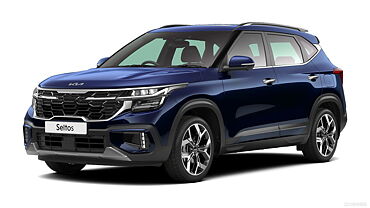
Kia Seltos colour palette revised
24 May 2024
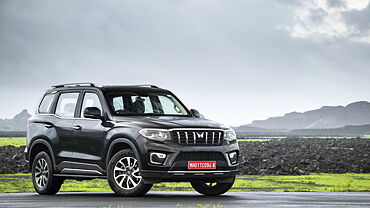
Mahindra Scorpio range open bookings come down to 86,000 units

Mahindra Scorpio N Adventure Edition breaks cover!
17 May 2024
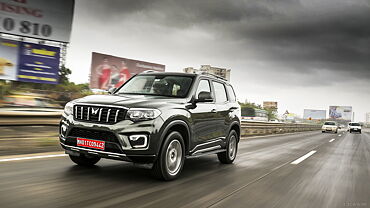
Mahindra Scorpio N prices in India increased by up to Rs. 25,000
19 May 2024
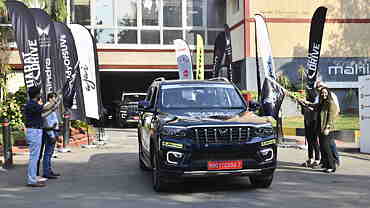
First ever Bharat Drive launched in collaboration with Mahindra Scorpio-N
Popular news.
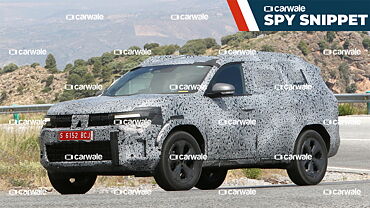
India-bound three-row Renault Duster spied on test
12 Jun 2024

Skoda Kushaq Onyx edition AT: Top 5 highlights
11 Jun 2024

Tata Motors to debut the Avinya range in FY2026

Mahindra sells 5,750 units of the Thar in May 2024
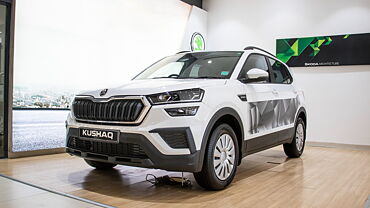
Skoda Kushaq Onyx automatic launched in India at Rs. 13.49 lakh
Recent news.
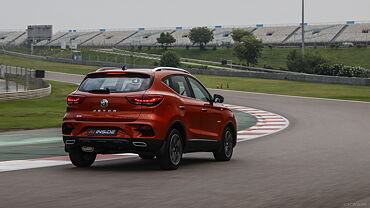
MG Astor prices hiked by up to Rs. 38,000 in June
14 Jun 2024
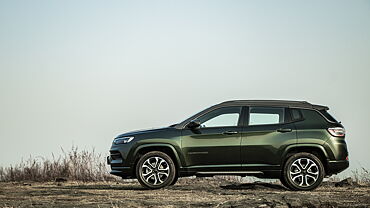
New Jeep Compass to arrive by 2027
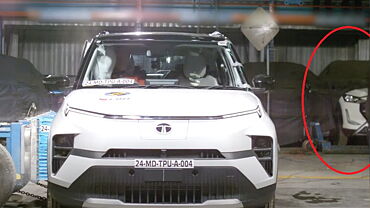
Is this the Nissan Magnite facelift?
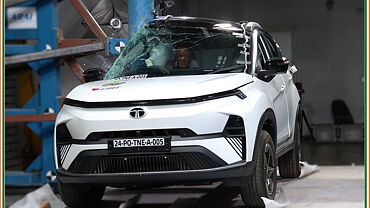
Tata Nexon EV scores 5 stars in Bharat NCAP crash test
13 Jun 2024

Tata Punch EV scores 5-star rating in BNCAP crash test
Mahindra scorpio n gallery.

- View All Images (225)

Featured Cars
- JUST LAUNCHED
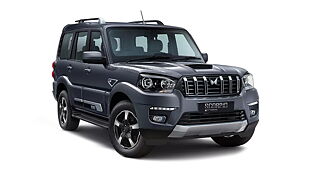
Rs. 60.00 - 65.00 Lakh Estimated Price
Get Launch Alert on WhatsApp
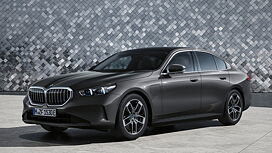
Rs. 85.00 Lakh - 1.00 Crore Estimated Price

Rs. 7.00 - 10.00 Lakh Estimated Price
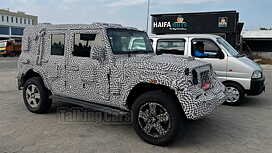
Rs. 16.00 - 20.00 Lakh Estimated Price
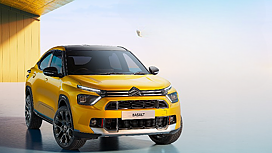
Rs. 12.00 - 15.00 Lakh Estimated Price
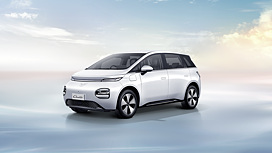
Rs. 25.00 - 30.00 Lakh Estimated Price
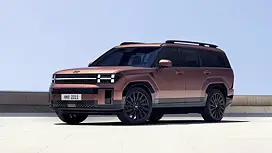
Rs. 45.00 - 55.00 Lakh Estimated Price

Rs. 17.00 - 22.00 Lakh Estimated Price
- mahindra-cars
- other brands
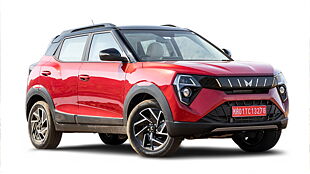
Mahindra Scorpio N Price in India
Popular videos.
- Investigates
- Houston Life
- Newsletters
WEATHER ALERT
6 warnings in effect for 8 counties in the area
‘robotaxi’ hitting the streets of houston for second time. why were the brakes pumped.
Gage Goulding , News Reporter , Houston, TX
Rayan Graham , Photographer & Editor , Houston, Texas
Holly Galvan Posey , Digital Content Producer
HOUSTON – Driverless taxis are heading back to Houston highways - but with some stipulations.
The autonomous taxis are making their way around town after being put on hold back in October 2023.
Cruise , the self-driving car company, launched their testing program for the second time on Tuesday.
This time around, the cars will have drivers manually operating the vehicle. However, in a few weeks the company plans to move to supervised self-driving, which is when a driver is in the car but only intervening if necessary.
Eventually, the cars will drive themselves following the testing program.
“I don’t really trust that,” said Deyna Garcia.
You wouldn’t be alone in that idea.
In October 2023, a Cruise taxi in California hit a woman and dragged her for 20-feet during an accident .
“I think if they took the necessary precautions and went back in their testing and added some additional safeguards to ensure that didn’t happen,” said Dio Jamerson in support of the self-driving cars.
“It’s a computer driving itself,” countered Alexis Rubio. “Something wrong at any point can happen.”
SEE ALSO: Would you trust self-driving cars on Houston roads?
Houston, we missed you! Today we’re resuming driving in Houston where we’ll build on the knowledge collected last year. We’ll start with human driven vehicles and move to supervised autonomous driving with a safety driver behind the wheel in the coming weeks, guided by safety. pic.twitter.com/jh9e7edFoK — cruise (@Cruise) June 11, 2024
Cruise, which is owned by General Motors, says they redesigned their approach to safety and even went as far as to bring on new leaders.
“Cruise’s AV stack is based on AI technology that learns from information gathered through our driving experience and retrains and evolves our models continuously,” a spokesperson told KPRC2. “The fleet learns from every intersection, construction zone, and road sign it encounters, and applies that knowledge to other environments and scenarios – much the same as a human driver learns, but with far more data and the ability to impart that continuous learning across the entire fleet. Because no two cities are the same, we plan to conduct this manual and supervised driving in multiple cities, including Houston, Dallas and Phoenix.”
If you’re looking to catch a ride in a self-driving taxi, it might be a while. There’s a waitlist to even sign up for Cruise .
Copyright 2024 by KPRC Click2Houston - All rights reserved.
About the Authors
Gage goulding.
Gage Goulding is an award-winning TV news reporter and anchor. A native of Pittsburgh, PA, he comes to Texas from Fort Myers, FL, where he covered some of the areas most important stories, including Hurricane Ian.
Rayan Graham
I am a Video Production Professional-KPRC News Photographer and Editor. I have over ten years of experience in news and independent media industries. I am big on storytelling and being creative.
Recommended Videos
- Entertainment
- Newsletters
WEATHER ALERT
A flood watch in effect for 4 regions in the area
Police: man confesses to child sex abuse at charter school where he worked in broward, police: man who worked as school janitor said he abused a girl in the school restroom after hugging escalated to ‘tickling’.
Andrea Torres , Digital Journalist
FORT LAUDERDALE, Fla. – A 23-year-old man confessed to sexually abusing a girl at the charter school where he had worked for three years in Broward County, according to a police report.
Bryam Salas confessed after a social studies teacher at New Life Charter Academy, at 3550 Davie Boulevard, in Fort Lauderdale, reported the girl confided in her about the abuse, according to a police report.
Salas, of Port St. Lucie, told a detective with the Fort Lauderdale Police Department that he had sexually abused the girl — who he thought was about 8 years old — in a restroom while working as a janitor, according to police.
“I know what I did was wrong, but like at the same time I know I didn’t do something that’s drastic enough to ruin that little girl’s life, which I probably did, but not really to a point where I am like hurting her or wanting to hurt her,” Salas said during his confession late last year, according to police.
According to the arrest report, Salas told a detective that he met the New Life Charter Academy student in August, and months later “hugging” escalated to “tickling” and then to sexual abuse in September and October.
“Part of me hated doing it,” Salas said, according to police.
Salas said he was abusing the victim when two little girls walked into the restroom, according to police. He allegedly told the girls he was fixing a toilet and asked the three to go back to class, according to police.
The police investigation started on Nov. 6. Court records show Broward County Circuit Judge N. Hunter Davis issued a warrant for his arrest after prosecutors filed the first-degree felony case against him on March 19.
According to the Broward Sheriff’s Office inmate records, Salas was arrested on Thursday and correctional deputies were holding him at the Paul Rein Detention Facility on Friday night in Pompano Beach after he appeared in bond court.
Salas is facing two counts of lewd and lascivious molestation of a victim younger than 12, and one count of lewd and lascivious conduct. Correctional deputies held Salas without bond on the two counts of lewd and lascivious molestation of a victim younger than 12, and a judge set his bond for the lewd and lascivious conduct charge at $100,000.
Salas no longer works at the New Life Charter Academy.
Copyright 2024 by WPLG Local10.com - All rights reserved.
About the Author
Andrea torres.
The Emmy Award-winning journalist joined the Local 10 News team in 2013. She wrote for the Miami Herald for more than 9 years and won a Green Eyeshade Award.
RELATED STORIES
Disney cruise passenger with pending sex crimes case caught with child sex abuse videos, authorities say, cruise ship workers accused of possessing child sex abuse, bestiality videos, homestead man accused of sharing child sex abuse videos; victims as young as 2.
Recommended Videos
- Account Settings
- Aston Martin
- Lamborghini
- Mercedes-Benz
- Rolls-Royce
Car Reviews
Car comparisons, auto resources.
- Auto Insurance
- Auto Glass Repair
- Auto Warranty
- Product Roundups
Top stories

- Manufacturers
Honda Details 2025 Civic Lineup
Honda has pulled the curtain back on the 2025 Civic lineup.
Starting prices for the 2025 Civic are up from 2024—$25,345 for the LX sedan; while the Sport trim goes for $26,250. All Sport models get black 18-inch wheels and dark exterior trim. The $28,750 Sport Hybrid brings heated front seats, dual-zone climate control, and a sunroof. The $31,750 Sport Touring Hybrid ups the ante with machine-finished wheels, leather seats, and a nine-inch touchscreen with wireless Apple CarPlay and Android Auto.
Honda already showed off the Civic Hybrid last month , boasting 200 horsepower and 232 lb-ft of torque–the most horsepower of any Civic not wearing the Type R badge. The Sport Hybrid and Sport Touring Hybrid sedans are rated at an impressive 50/47/49 mpg city/highway/combined by the EPA.

Safety hasn’t been overlooked. Every Civic now includes blind-spot assist with rear cross-traffic alert. The Honda Sensing driver assist package is standard, packing features like a Collision Mitigation Braking System with pedestrian detection, adaptive cruise control, lane-keep assist, and forward collision warning. The Civic also features Honda's award-winning three-chamber airbag design for the driver and front passenger.
The Sport Touring Hybrid is also the first Civic to come with Google built-in, offering Google Maps, Google Play, and Google Assistant. Every trim now features front USB-C ports
The hatchback variant is still a mystery in terms of pricing and fuel economy, details are expected to be revealed closer to its summer release. Honda is also holding back details on the 2025 Civic Si and Type R for now. Look for updated 2025 Civic sedans in dealerships now.
This article was co-written using AI and was then heavily edited and optimized by our editorial team.
Become an AutoGuide insider. Get the latest from the automotive world first by subscribing to our newsletter here .
More by AutoGuide.com News Staff
Join the conversation
Popular articles.

2025 Toyota Crown Signia First Drive Review: Call Me Camry Cross

Americans Want Gasoline

What To Do When A Window Regulator Goes Bad

Best Small SUV | Testing (almost) Every Compact SUV

The Plug-in Hybrid With the Longest Range: Top 10 List
Latest comparisons.

2024 Porsche Cayenne S and Cayenne Coupe Review

What’s the Difference Between the 2023 and 2024 Subaru Crosstrek?

Volkswagen Atlas SE Vs SEL: Which Trim is Right for You?

Hyundai Palisade Vs Mazda CX-90 Comparison

Toyota Corolla LE Vs Nissan Sentra SR Comparison
Car buying tools.
- How to Buy a Car
- Free dealer Price Quote
You may also be interested in

The 2025 Honda Civic Hybrid Will Do Nearly 50 Miles Per Gallon
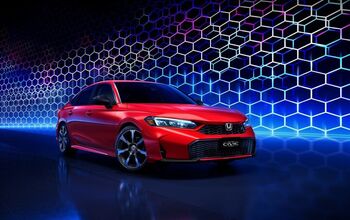
2025 Honda Civic Hybrid Debuts Styling Changes For Whole Lineup
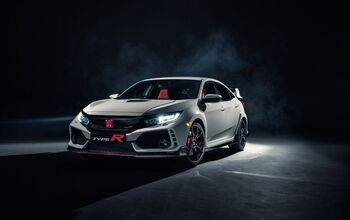
Expect a Cheaper, Base Model Honda Civic Type R to Join Lineup in 2018

2012 Honda Civic Si, New Details and Photos Leaked

10 Photos of The Exclusive Beach Runner By ECD

Helping You Choose The Best Performance Tires

50 Pictures of the Subaru Crosstrek Wildness in the Wilderness

Jeep Wagoneer S Trailhawk Concept is the One We Really Want
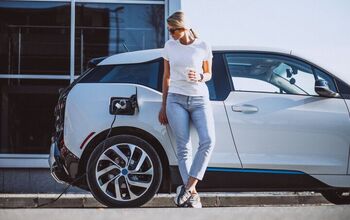
Here's How Much Electric Car Advertising Grew Last Year
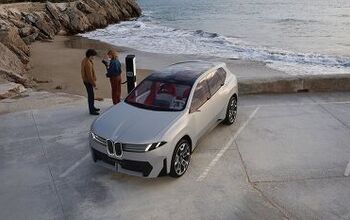
BMW Vision Neue Klasse X Concept Hands-On Preview

How to Test a Car Battery
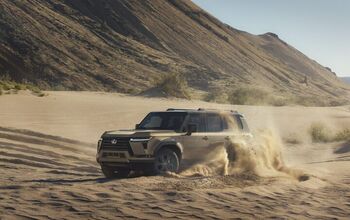
The 2024 Lexus GX Overtrail Starts At $70,600

The Last Chevrolet Camaro Has Been Made
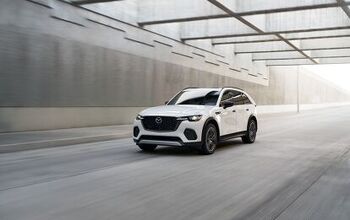
2025 Mazda CX-70 debuts with Familiar Engines and Looks, More Space
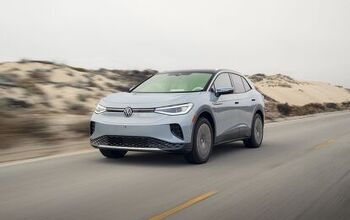
This EV is Now More Affordable with Full $7,500 Tax Credit

34 Photos of Kia's Soon to Depart Sporty Fastback

Top 10 Best New Cars to Modify

IMAGES
VIDEO
COMMENTS
What the cruise control light means. Most cruise control lights use 2 different colors to let you know what state the system is in. Typically, the cruise control light will be orange when the system is on, but a speed hasn't been chosen yet. Once a speed is selected, this light will turn green. If the computer has detected an issue, this ...
You operate cruise control by either a stalk on the steering column or several buttons on the steering wheel. These include an on-off switch; a "set" button to select the speed you want the car to ...
The new cruise control symbol replaces the word "Cruise Control" With a speedometer symbol and an arrow pointing to a set speed. Cruise Control Turned ON Orange Symbol. Cruise control uses two types of colors to show the state of the cruise control. The cruise control uses orange light when the cruise control stays on, but the speed has not ...
3. Drive your car until you reach your desired speed and hit "SET.". Cruise control will set the car to hold steady at a particular speed. Once you reach the speed you want (keep an eye on your car's speedometer), push the "SET" button.
The cruise control symbol on your car dashboard represents the availability and status of the cruise control feature. It is typically depicted as a speedometer icon with an arrow or a vehicle icon with speed lines. The symbol is designed to indicate that the cruise control system is active and ready to be engaged.
For your car, check the manufacturer's manual for the location and specific instructions. To set cruise control, press the ON/OFF button or switch. If you press this button again, it typically turns the system off. The Res + (resume / increase seed) button increases the cruising speed by 1 mph, while the Set - (set speed / reduce speed ...
1. Definition. Cruise control is an electronic system that allows a vehicle to maintain a consistent speed, without the need for continuous driver input on the accelerator pedal. 2. Activation. Cruise control systems are typically activated by pressing a button or switch located on the steering wheel or dashboard. 3. Function.
Fuel Efficiency. One of the main advantages of using cruise control is improved fuel efficiency. By maintaining a constant speed, cruise control helps reduce fuel consumption, leading to better gas mileage. Rapid acceleration and deceleration, on the other hand, can lead to increased fuel consumption.
To use cruise control, you can typically press buttons on your steering wheel to activate the system, set your speed, adjust your speed up or down within the system, and deactivate the system. Using cruise control lets you set a speed for your car to maintain even if you take your foot off the gas. On long trips, it can reduce driver fatigue.
In older cars, having your cruise control engaged on a wet or icy road could allow the vehicle to accelerate or experience wheelspin when driven wheels encounter a low-traction surface. Here, the ...
One of these is connected to the gas pedal - and pressing the pedal opens up the throttle, increasing airflow to the engine and speeding up your car. Cruise control systems use an electronic actuator to do this, rather than a pedal. When you hit "ACCEL" on your cruise control system, your car responds by opening up the throttle in the ...
Updated May 9, 2022. Adaptive cruise control (ACC) is like traditional cruise control, but smarter. ACC systems allow you to set a desired speed until your vehicle encounters slower-moving traffic ...
Cruise control is a feature allowing the driver to set a predetermined speed, which the system's computer maintains until the driver adjusts the speed, taps the brake, or disengages the system ...
The cruise control system controls the speed of your car the same way you do -- by adjusting the throttle position.But cruise control actuates the throttle valve by a cable connected to an actuator, instead of by pressing a pedal.The throttle valve controls the power and speed of the engine by limiting how much air the engine takes in (see How Fuel Injection Systems Work for more details).
Cruise control is an electronic device within your vehicle that controls the speed of your vehicle. It allows the driver to maintain a constant speed of 25 mph without holding their foot on the accelerator. Although the feature has been around for 70 years, automotive manufacturers continue to improve upon the technology to provide drivers with ...
The cruise control system uses an actuator which controls the accelerator allowing the car to continue driving at a set speed. The actuator is connected to the throttle via a cable. During cruise control, the cable is not just monitoring the car's speed but also the power of the engine. It ensures that the engine takes in the exact amount of ...
Cruise control in a car replicates the inputs of a driver to control the vehicle's speed. But instead of pressing the accelerator pedal, it uses a different mechanism to maintain a constant cruising speed. Initially, the system used a cable to control the accelerator (throttle valve). You can find these mechanisms in older cars.
Common cruise control icon on dashboards specified by ISO-7000-2047, ISO 2575:2010, and ISO 6727. Another icon exists for the more modern adaptive cruise control, but some cars also use the cruise control icon for the speed limiter function, which has no standard icon.. Cruise control (also known as speed control, cruise command, autocruise, or tempomat) is a system that automatically controls ...
Set the cruise control: Once you've switched the system on, press the set button. This will communicate with your car to hold the current speed. In most vehicles, this will turn the dashboard indicator green. After the cruise control is set, you can remove your foot from the accelerator and the car should maintain its speed. 4.
Electronic stability control systems help prevent cars from skidding when turning and drivers from losing control in critical driving situations. An ESC system evaluates data from various sensors ...
While adaptive cruise control is the most commonly used term for this technology, different automakers have different names for it. If you read that a car offers smart cruise control, active cruise control, automatic cruise control, dynamic cruise control, radar cruise control, or intelligent cruise control, be sure to find out exactly what the feature's capabilities are.
Adaptive cruise control (ACC) is a system designed to help vehicles maintain a safe following distance and stay within the speed limit. This system adjusts a car's speed automatically so drivers ...
2. 2018 Mazda 3. The 2018 Mazda 3 provides drivers with an adaptive cruise control system that detects rear-cross traffic and blind-spot monitoring, great for making safe lane changes. It also ...
The cruise control system uses an actuator to control the throttle input and maintain a pre-set speed. This same servomechanism is used in adaptive cruise control too but with the application of ...
Our legacy of envisioning—and creating—the way forward continues. Offered on the 2023-2024 LYRIQ; * 2021-2023 Escalade; * 2022-2023 XT6; * 2021 and 2023 CT4; * 2021 and 2023 CT5; * and 2018-2020 CT6, available Super Cruise™ is the first true hands-free driving-assistance technology for compatible roads. Super Cruise utilizes advanced technologies to provide the ease and convenience ...
As easy as 1, 2, 3 — enable Super Cruise hands-free driver technology in three simple steps. While enabled, Super Cruise works with Adaptive Cruise Control † to control acceleration and braking, and with OnStar to ensure that your vehicle receives the latest updates. It uses real-time precise positioning, cameras, sensors and LiDAR map data to help detect every curve, helping to make long ...
Cruise, the self-driving car company, launched their testing program for the second time on Tuesday. This time around, the cars will have drivers manually operating the vehicle.
FORT LAUDERDALE, Fla. - A 23-year-old man confessed to sexually abusing a girl at the charter school where he had worked for three years in Broward County, according to a police report.
New York CNN —. Car manufacturer Stellantis is recalling 211,581 SUVs and pickup trucks over a software malfunction that could cause their electronic stability control systems to fail. The ...
Starting prices for the 2025 Civic are up a bit. Honda has pulled the curtain back on the 2025 Civic lineup. Starting prices for the 2025 Civic are up from 2024—$25,345 for the LX sedan; while ...